Sighișoara
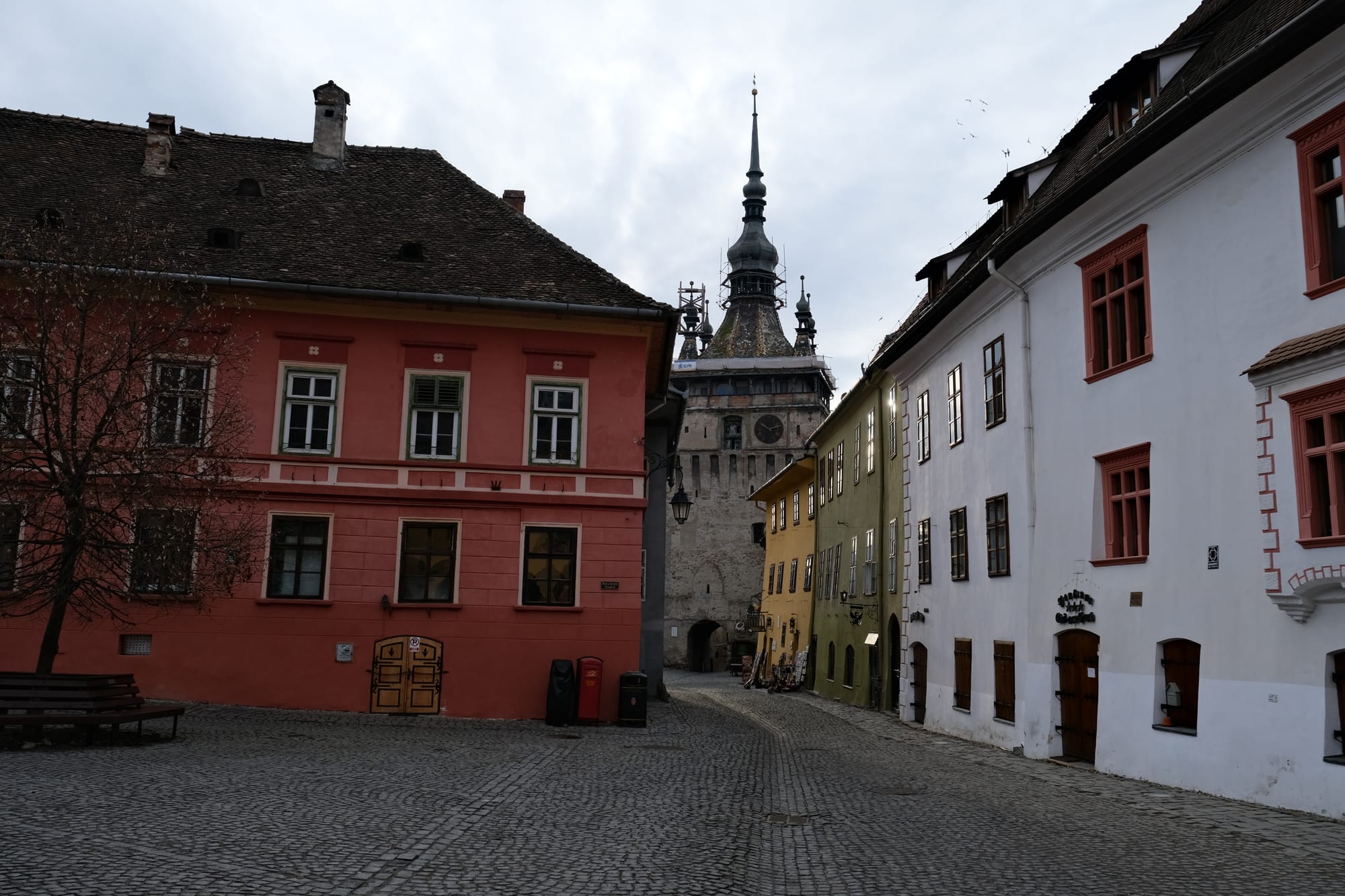
A colleague of mine told me I should go to Sighișoara while I was in Romania. This city was established by Saxons in the 12th century and today it is one of the best preserved medieval citadels in Europe. It is a deeply historic town and incredibly beautiful. On the 11th of February I went to visit, and I am so glad I did.
Unfortunately, the train to Sighișoara is slow. While the drive from Brasov (where I was staying) to Sighișoara is about an hour and a half, the train is at least three hours. The train schedule also didn't align well to allow me to visit Sighișoara in a single day. Instead, I opted to take a train on Saturday evening, and spend the night. This way I could have a full morning and afternoon on Sunday to explore the city.
I arrived in Sighișoara at around 8:45 pm on Saturday night. I followed Google maps, walking up the hill and entered the citadel where my accommodation was. I was tired from the walk I did this day to Joaca Saddle (see previous post) so I rested that evening and read a book. In the morning, I checked out of the hotel and went to find some breakfast.
Fortress Square
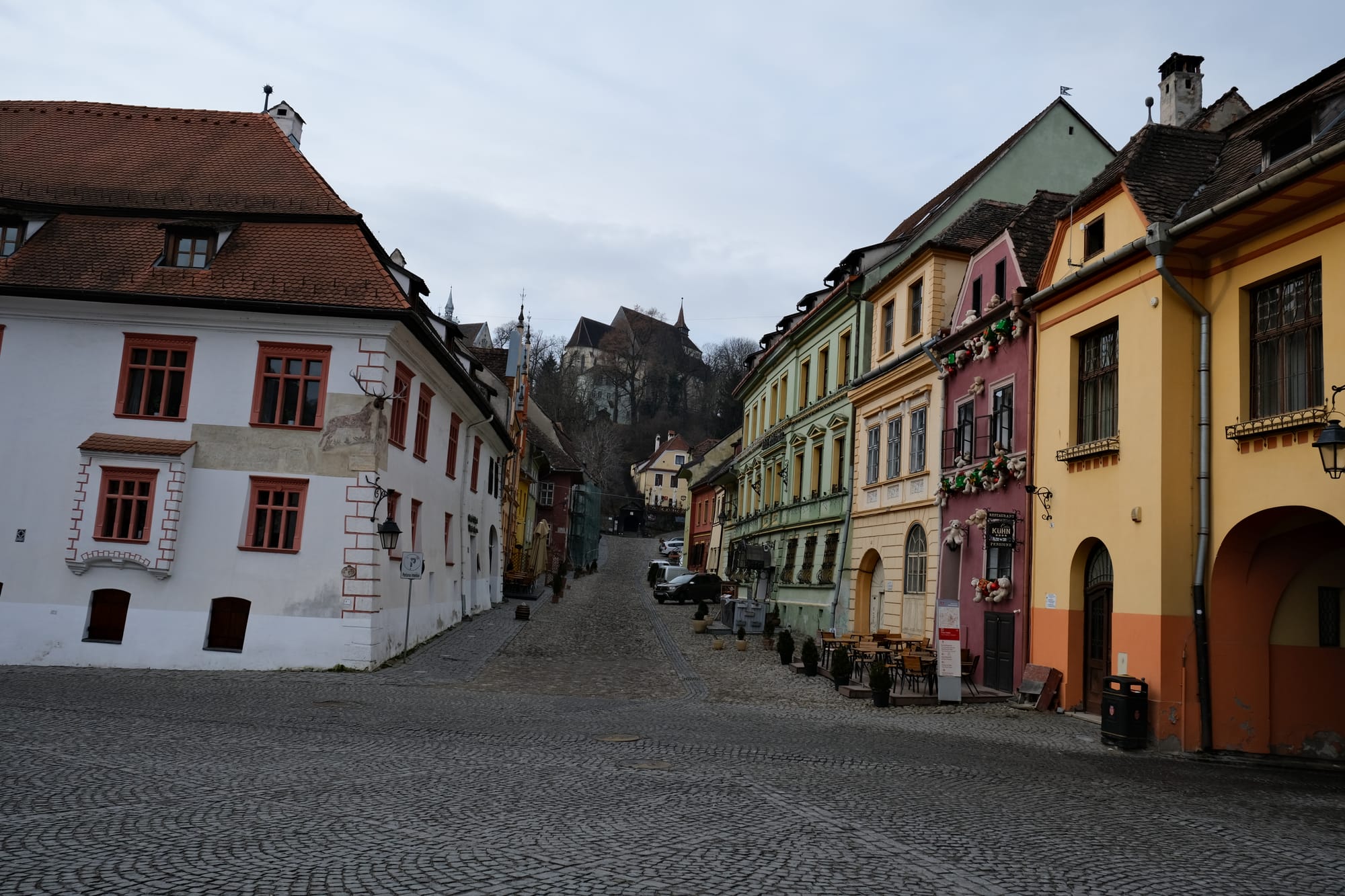
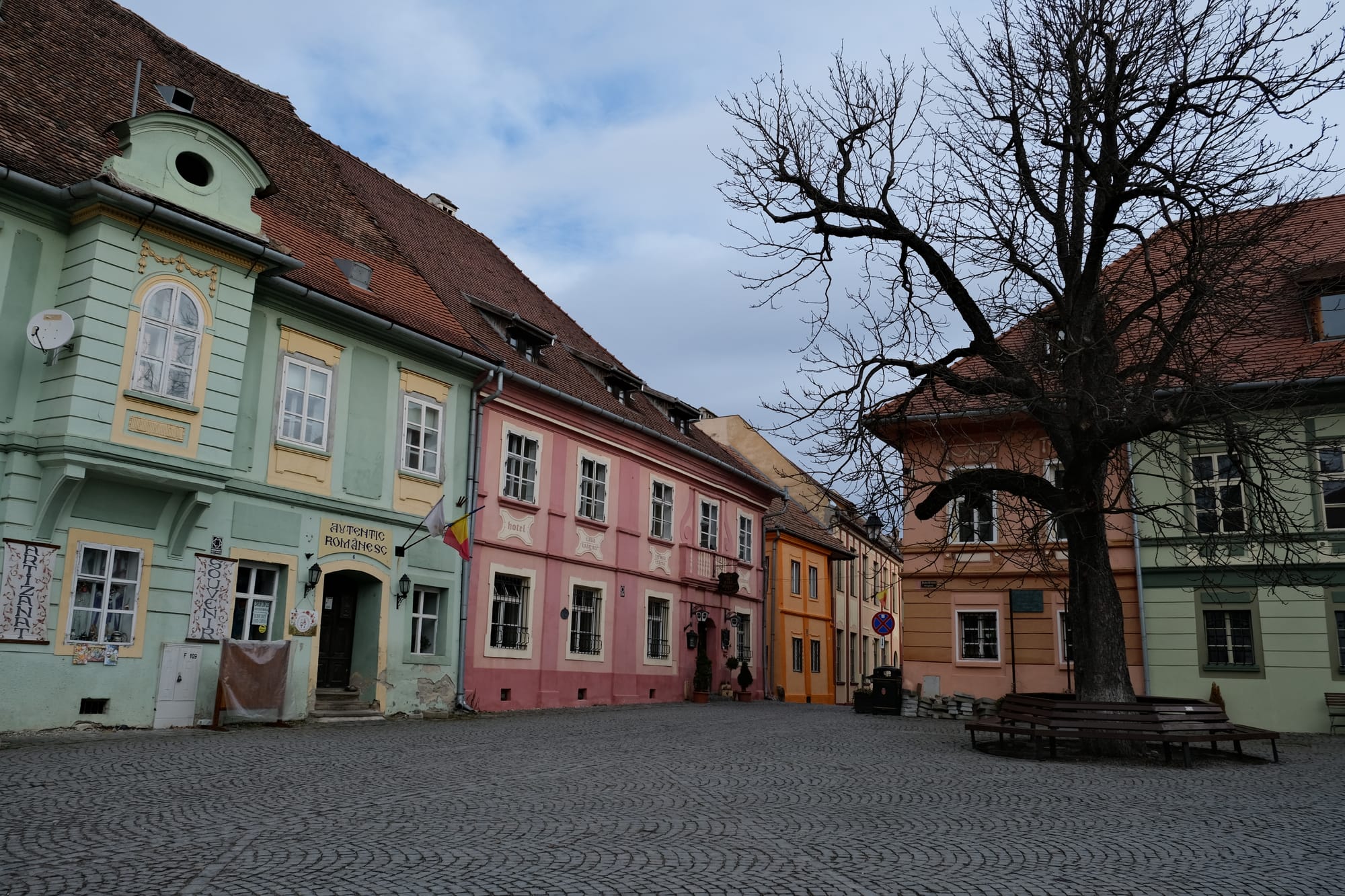
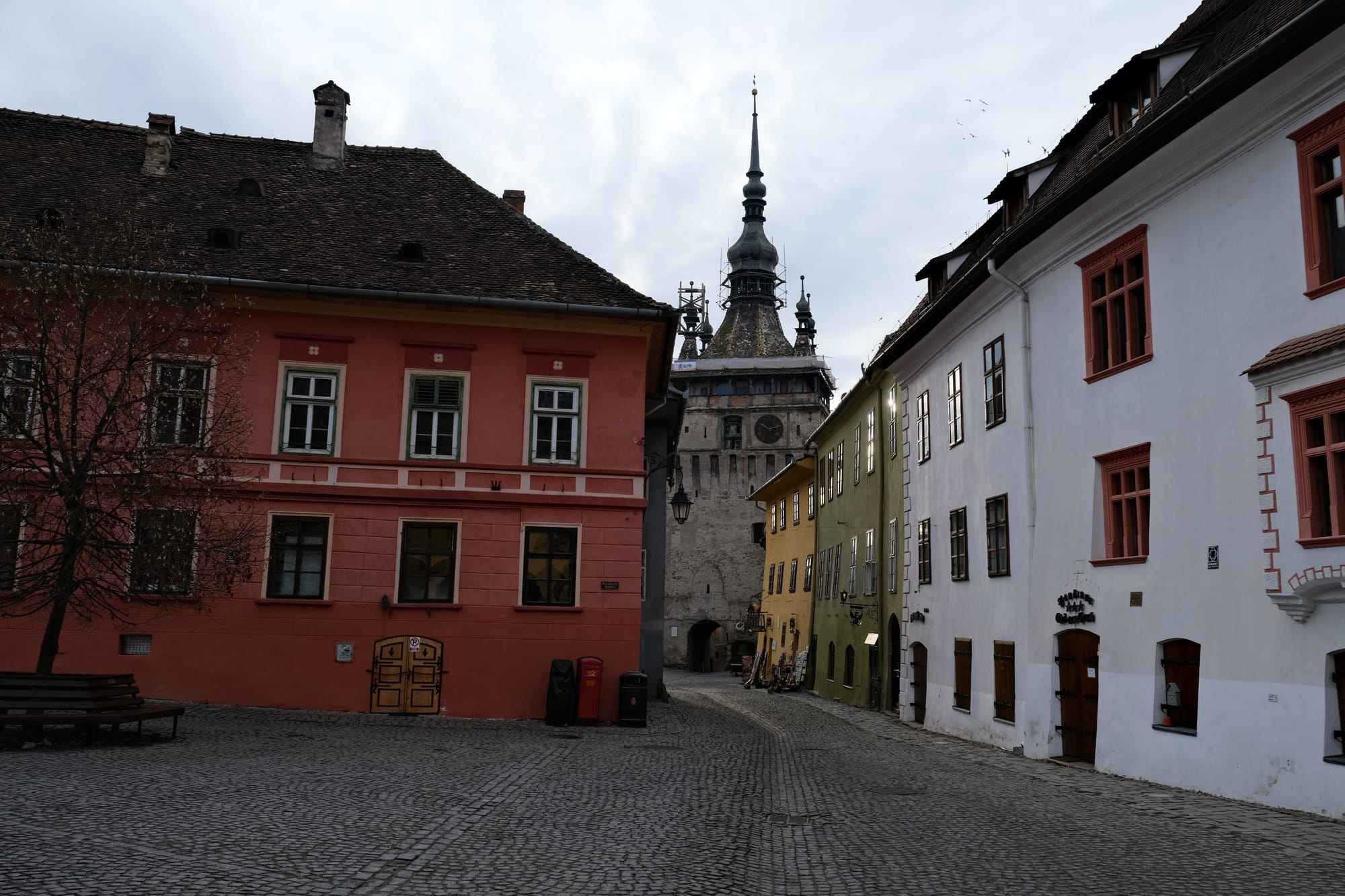

The doorstep of the hotel was literally right on the Fortress Square and it was the first thing I saw when I exited. In fact, you can see the the hotel I stayed at, Casa Wagner, its the pink building in the second image. This square is in the centre of the fortified citadel and has some of the most beautiful buildings. Many of the streets connected to it, so I was often walking through it in my explorations. In the morning, the first thing that captured my attention was the Clock Tower, visible down one of the streets.
The Clock Tower
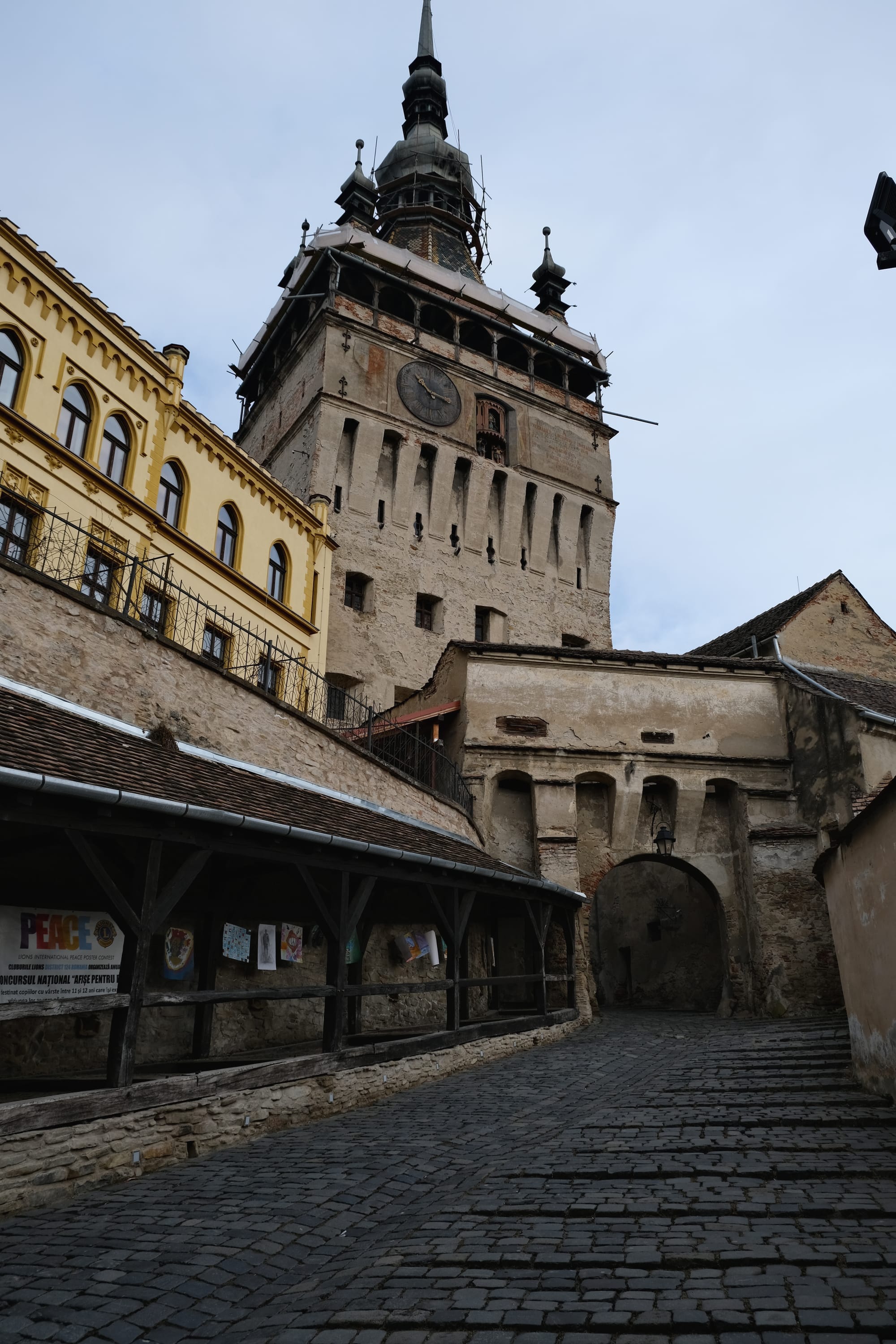
The Clock Tower is one of the largest and tallest towers in the city, and it is almost always visible wherever one goes. It originally served as the administrative centre of the city and one of the two gateways into the citadel. Today it serves as a museum with artifacts from the history of Sighișoara.
The picture above is taken from within the old barbican looking towards the gateway beneath the Clock Tower. There were three gates to pass through to get into the citadel. One at the clock tower, one just before it that you can see pictured above, and a third one that was right behind me when I took this picture.
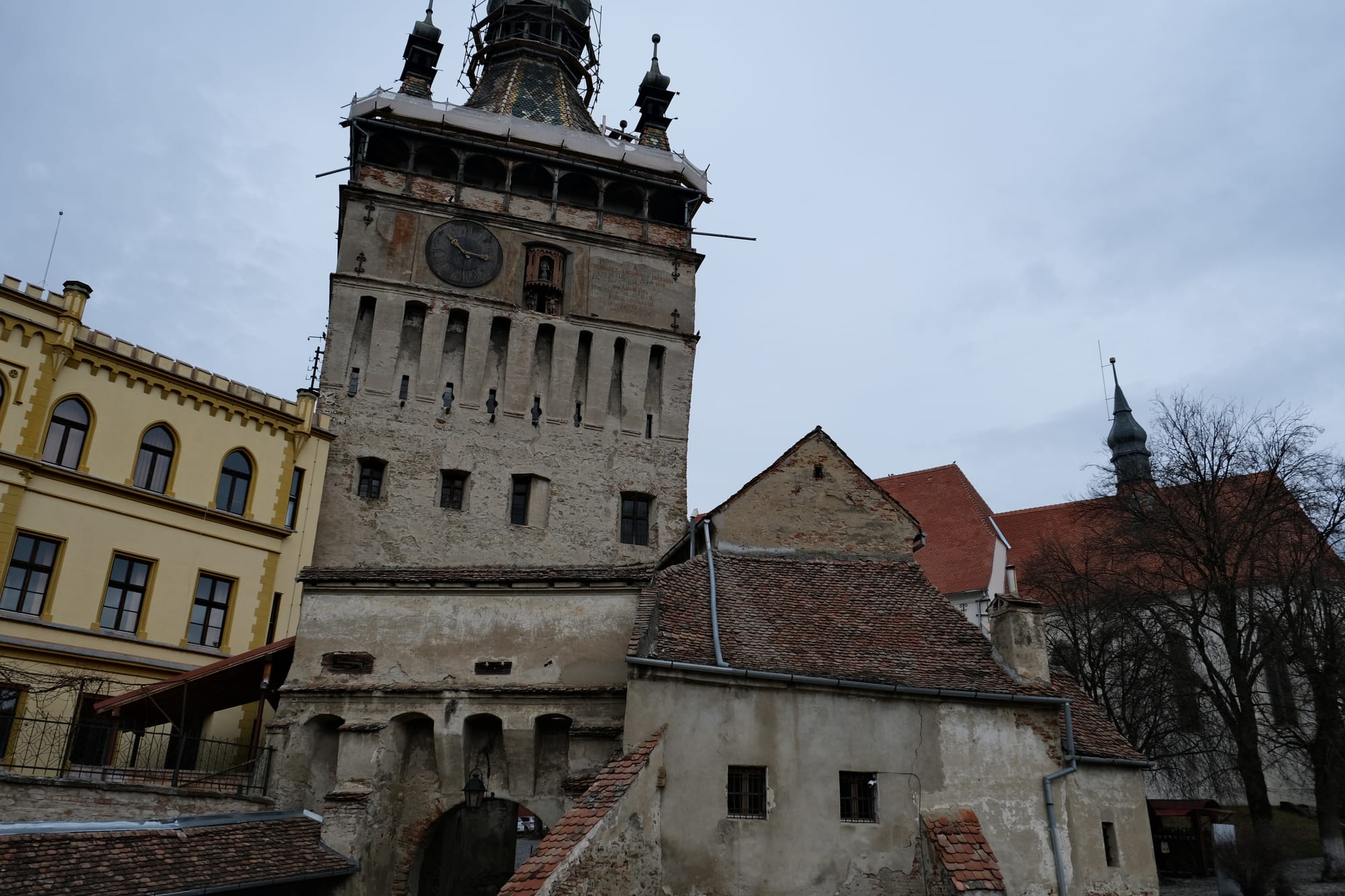
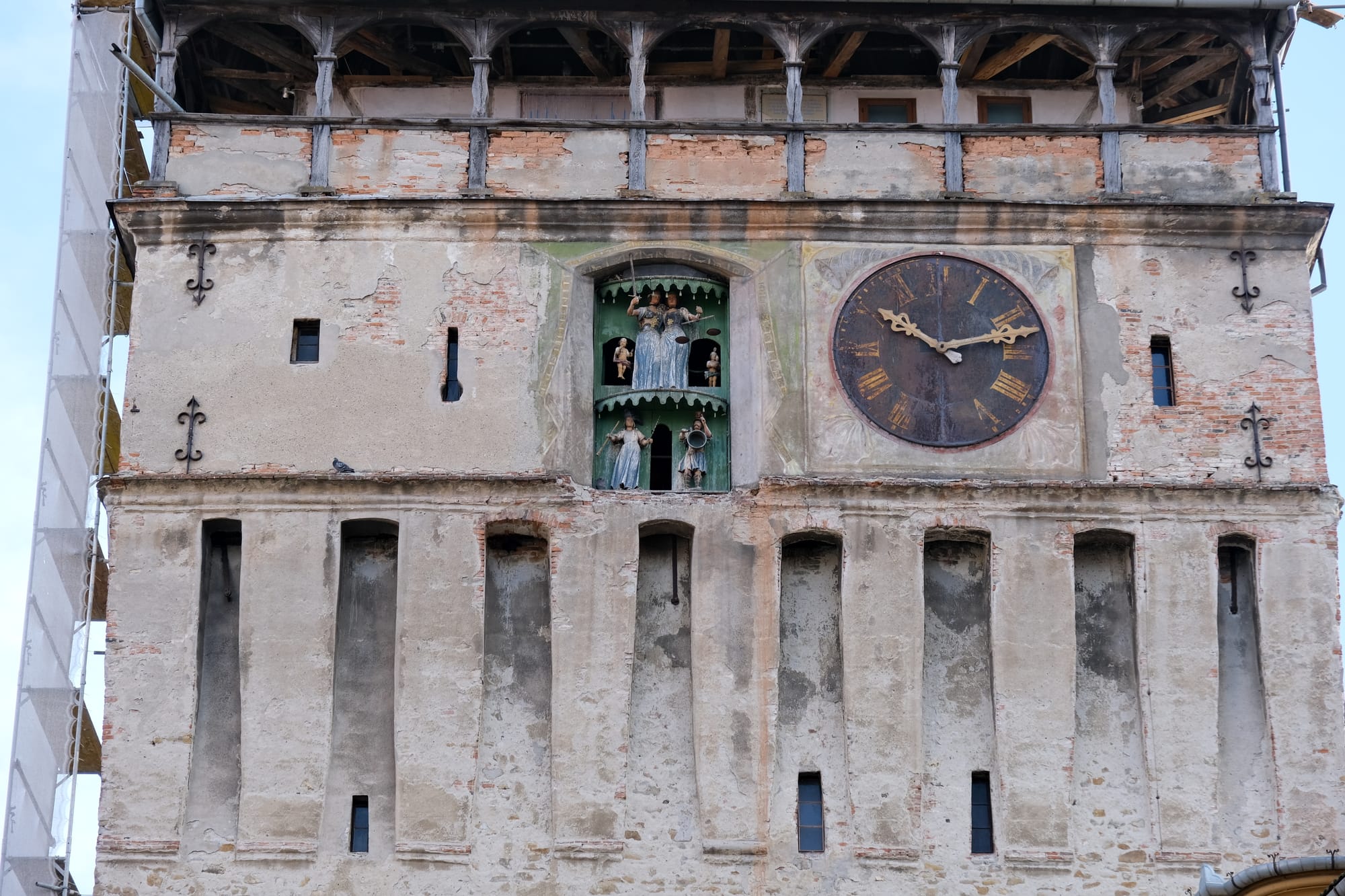
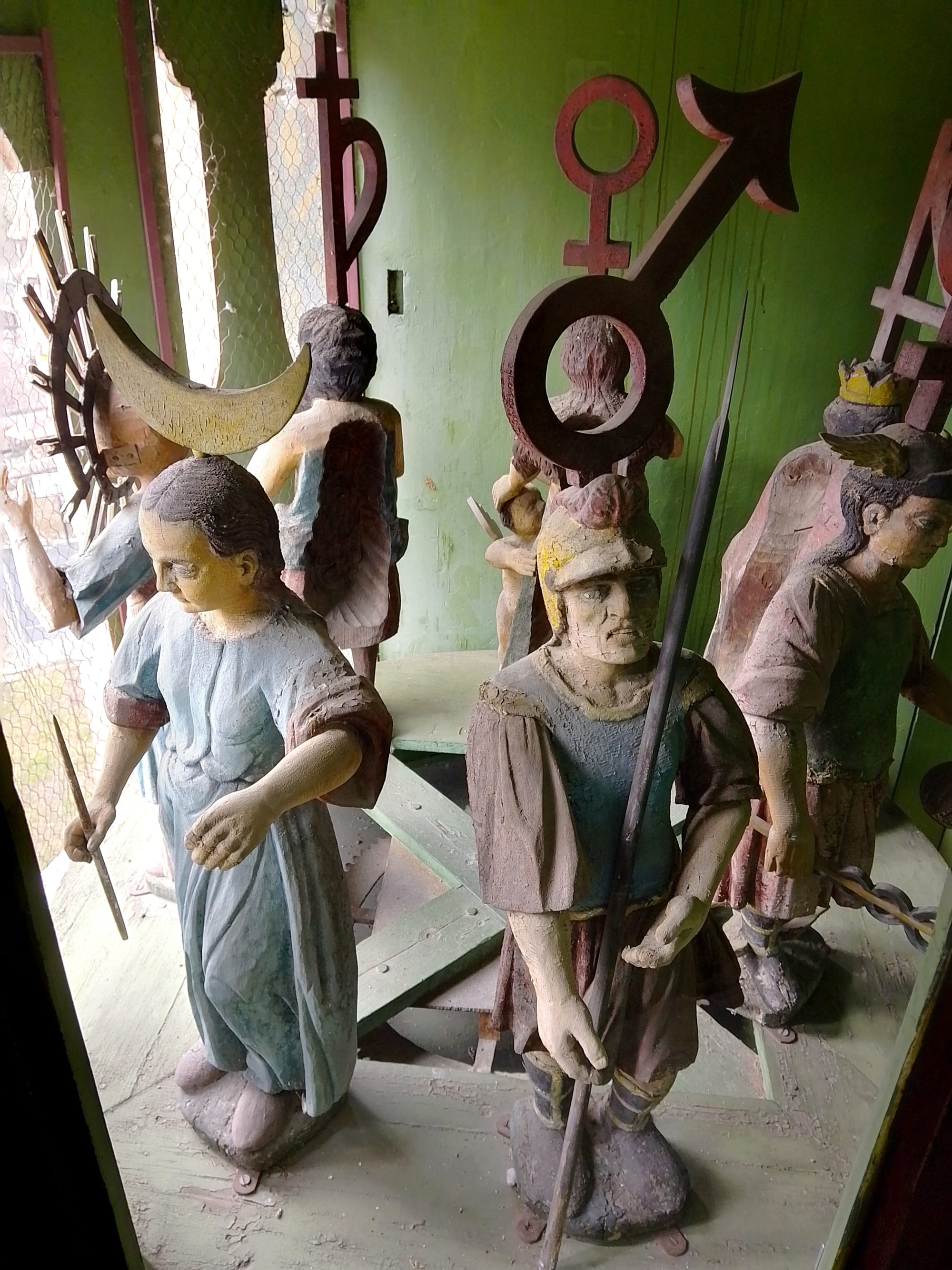
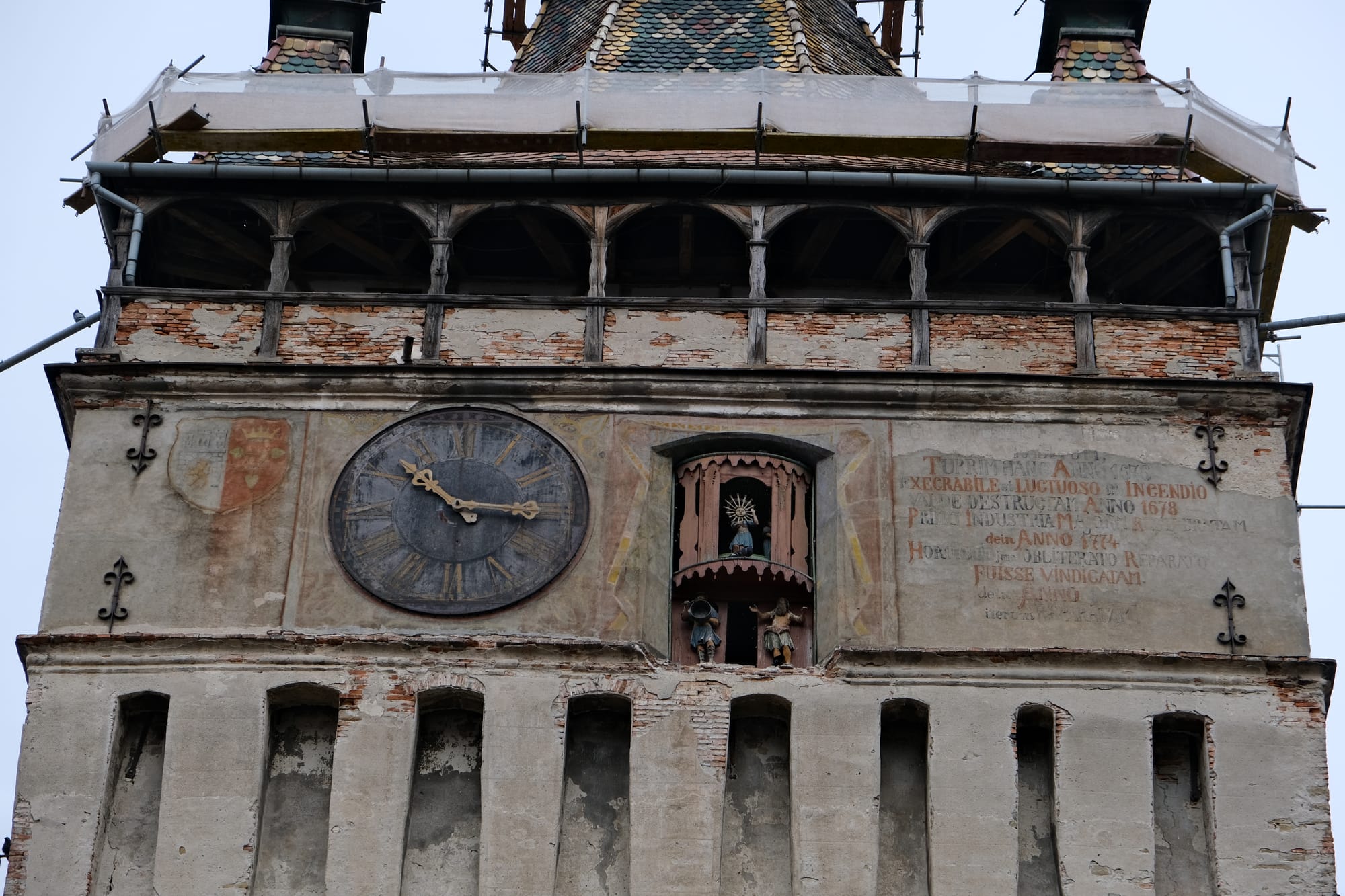
The Clock Tower at Sighișoara had these puppets as part of the mechanism. There were seven puppets, one for each day of the week, and they rotate so the puppet for the current day looks out the clock tower. Each puppet was based on the gods that the week days were named after. Since Tuesday is named after Mars, the roman god of war, the puppet for Tuesday has a spear and a very fierce expression. You can see the Monday puppet has a moon, the Sunday one has a halo like the sun.
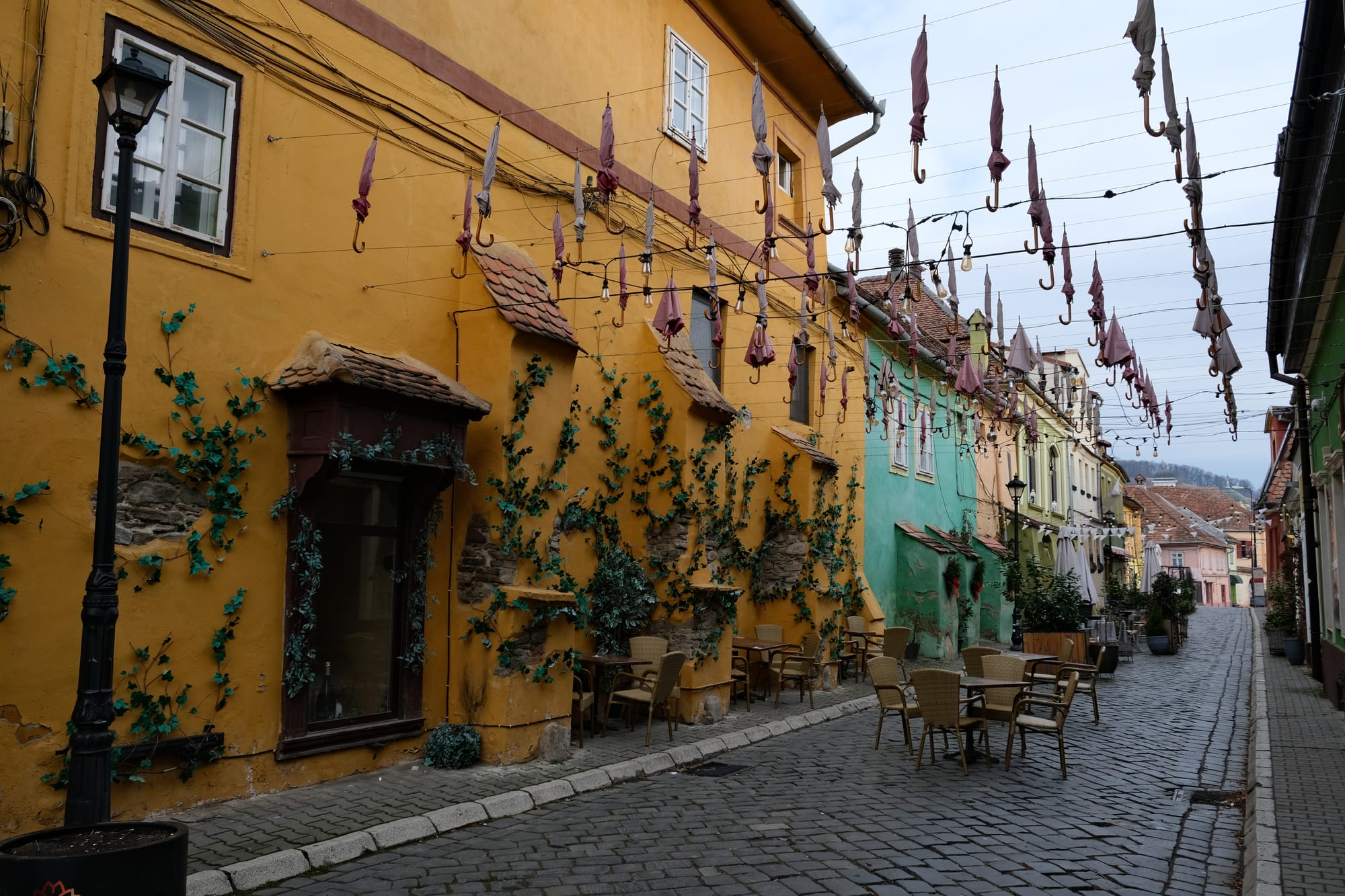
I had a coffee and breakfast just outside the Citadel, not far from the clock tower. I walked down the street above to get to the coffee shop, and it was really pretty. In summer time this would be such a nice street to visit. Being winter it was cold so I found a table inside for my coffee. I went to a different place for breakfast and there I did sit outside as I wanted to enjoy the atmosphere of Sighișoara.
The Guild Towers
The fortified citadel, basically the old town region that was surrounded by a wall, is located on a hill. The city had to be fortified as it was established in Transilvania, a region that was often invaded by enemy forces. That is part of the reason why the town was established, to bolster the defenses and extend the Austro-Hungarian influence in the region. The craftsmen who established the town needed to defend it and they divided this work between the different guilds of the city. Each guild was given a section of wall to defend and they built a tower to aid in that defense. Some of these towers remain to this day and they were named after the guild that built them.
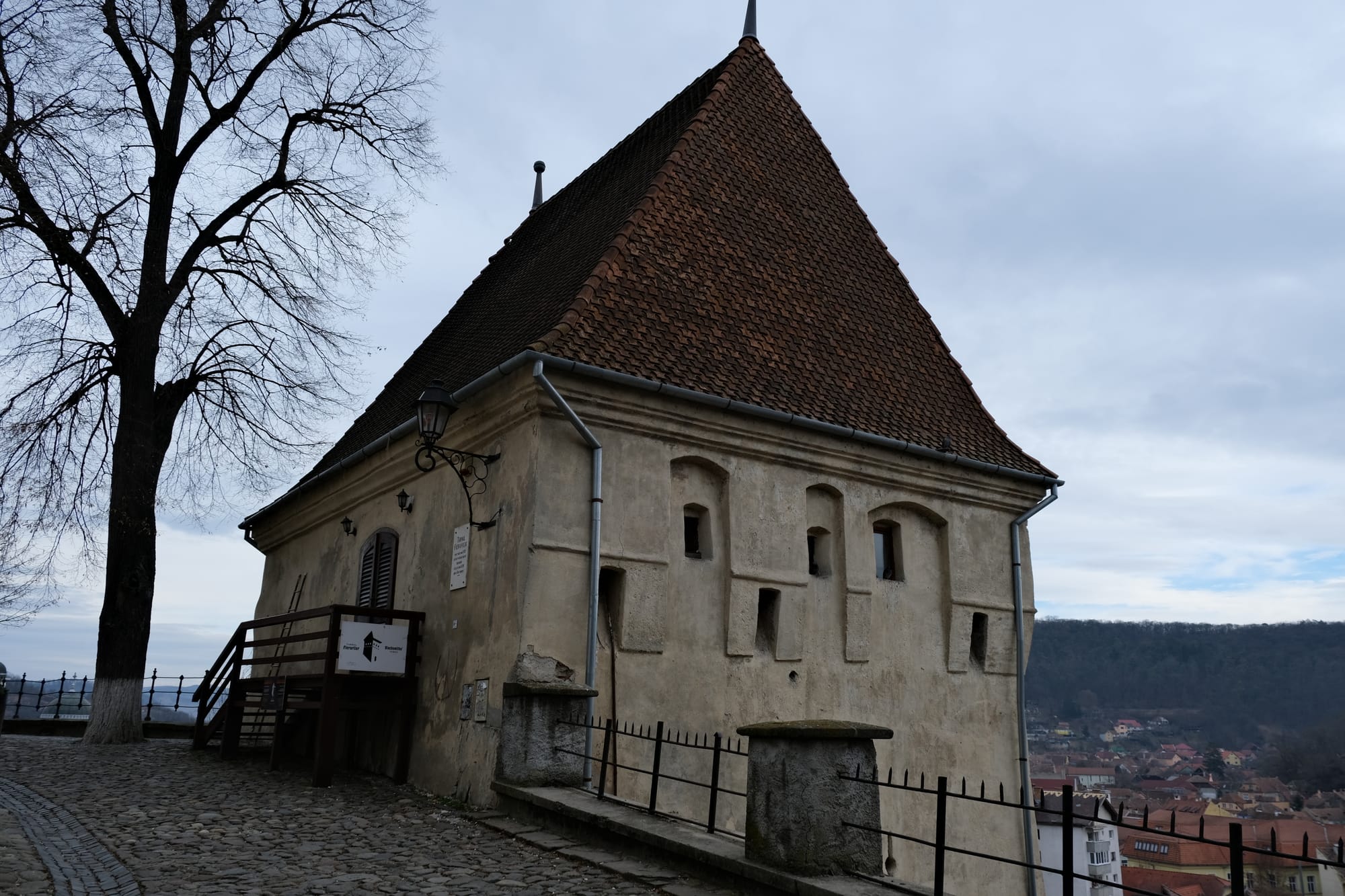
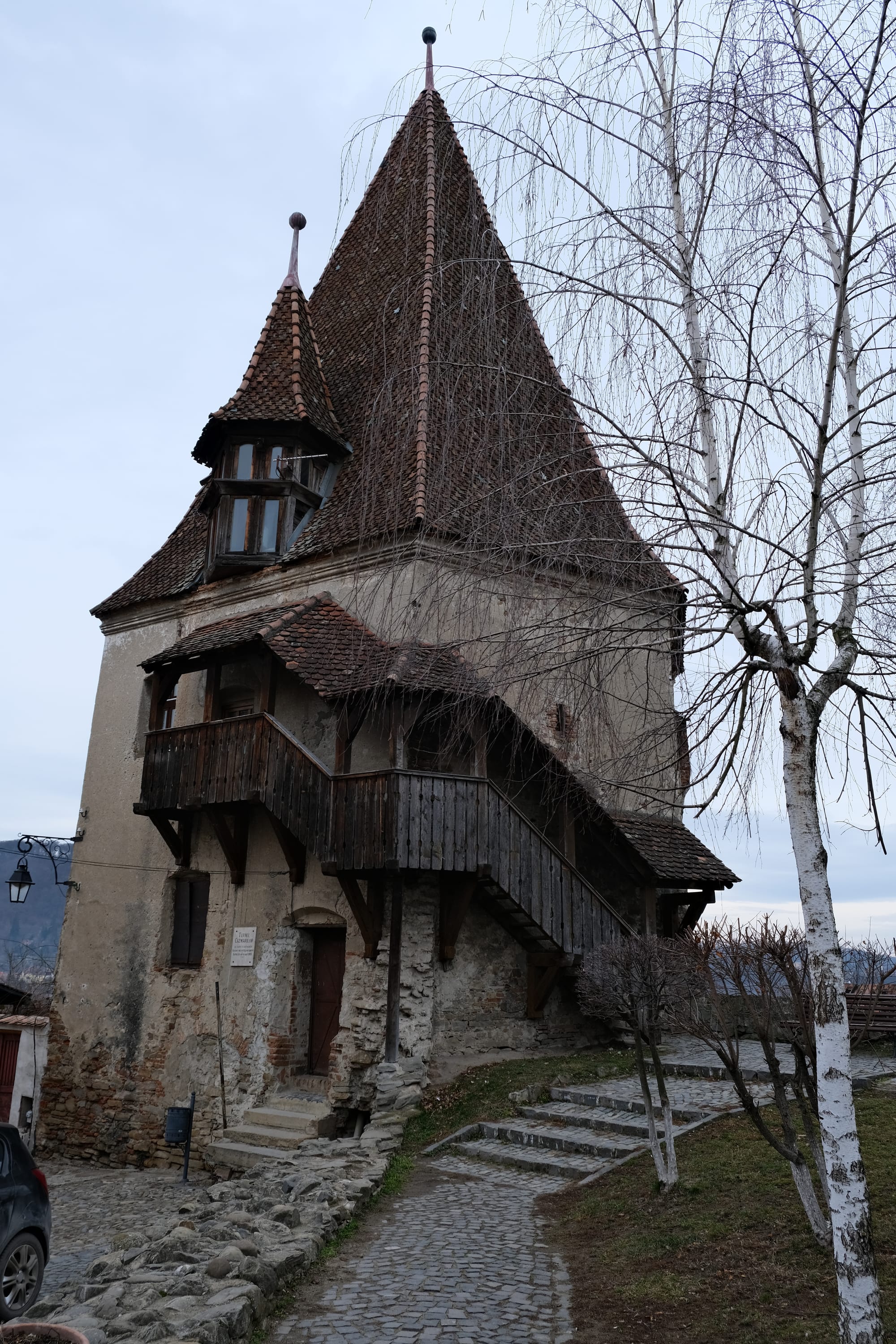
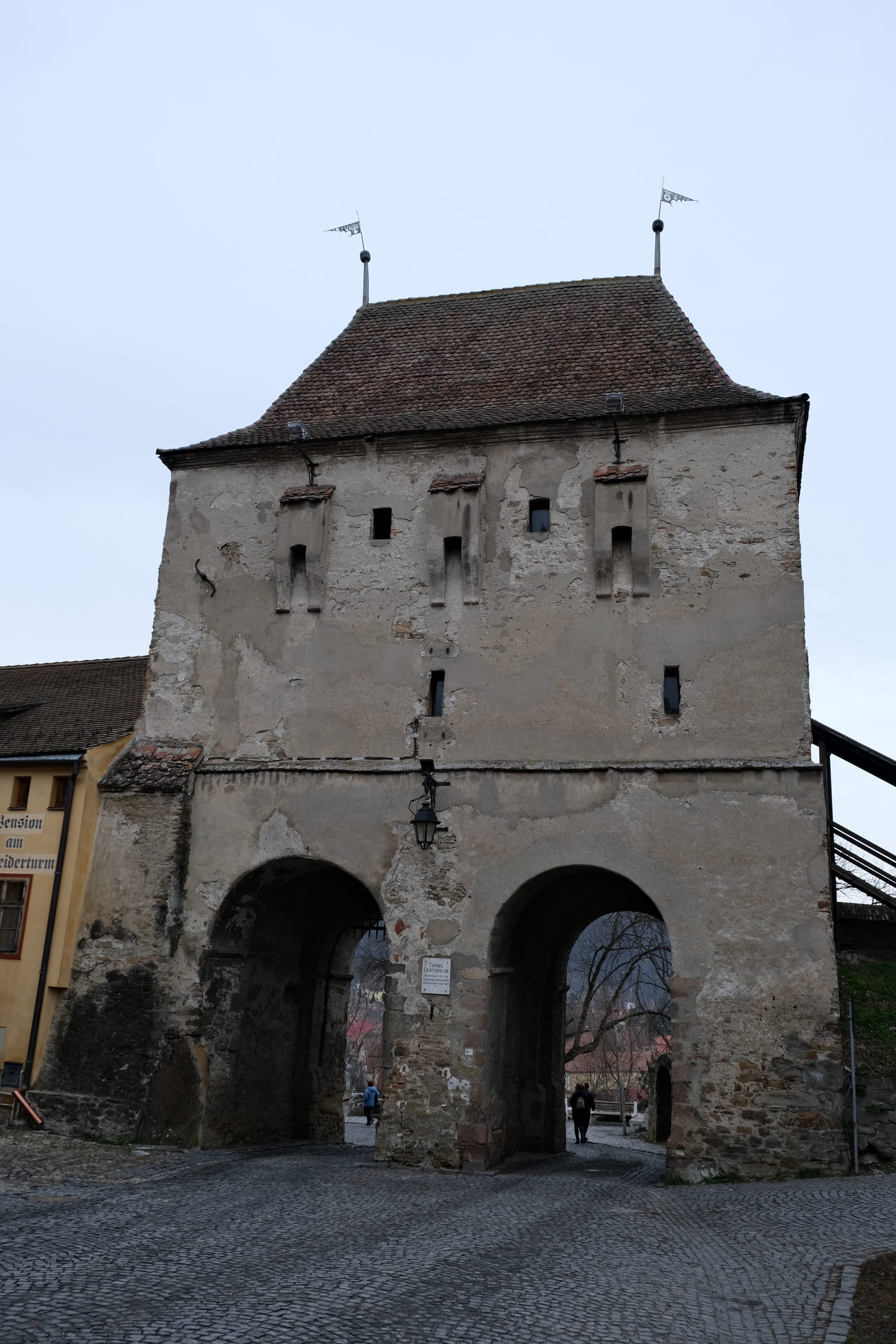
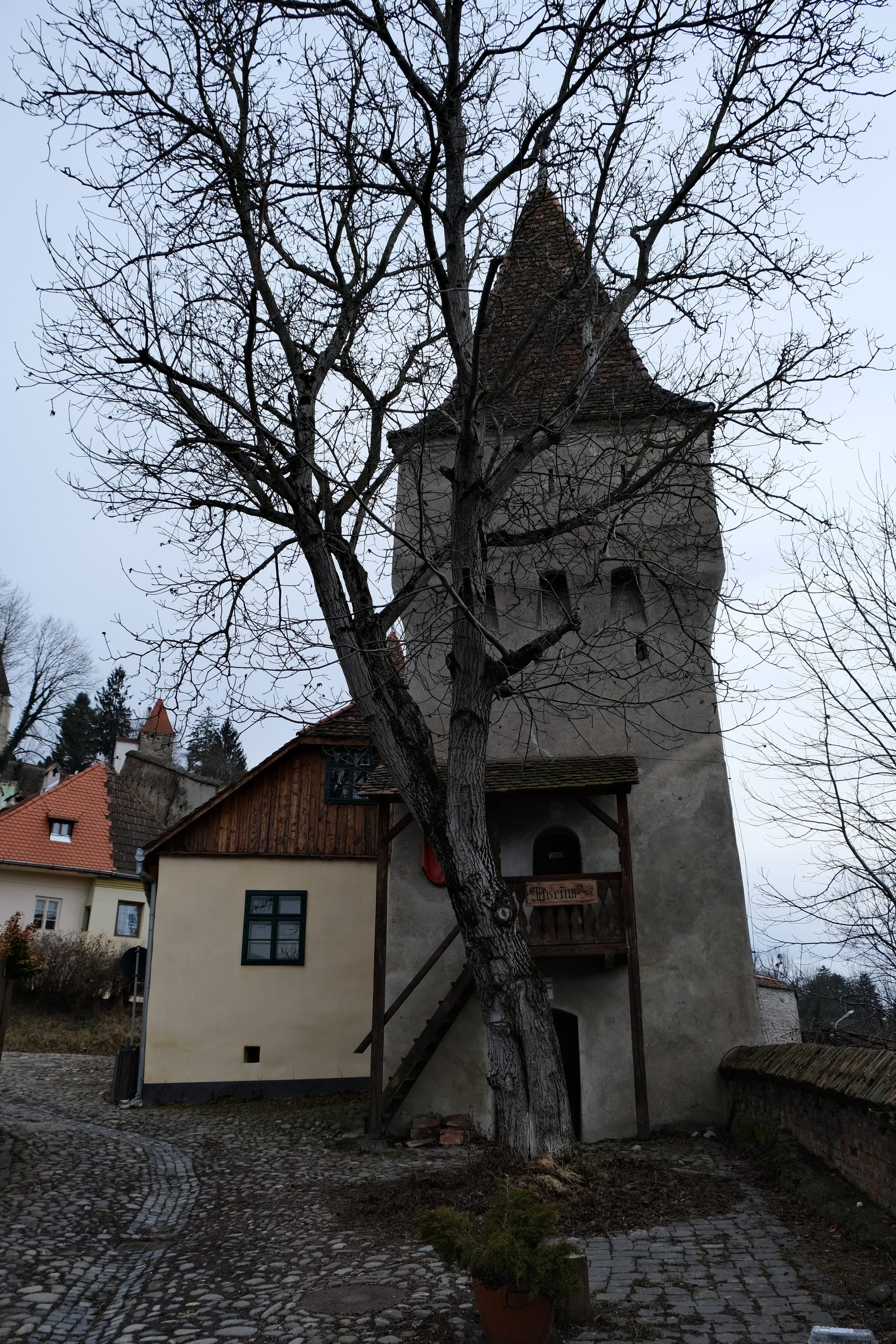
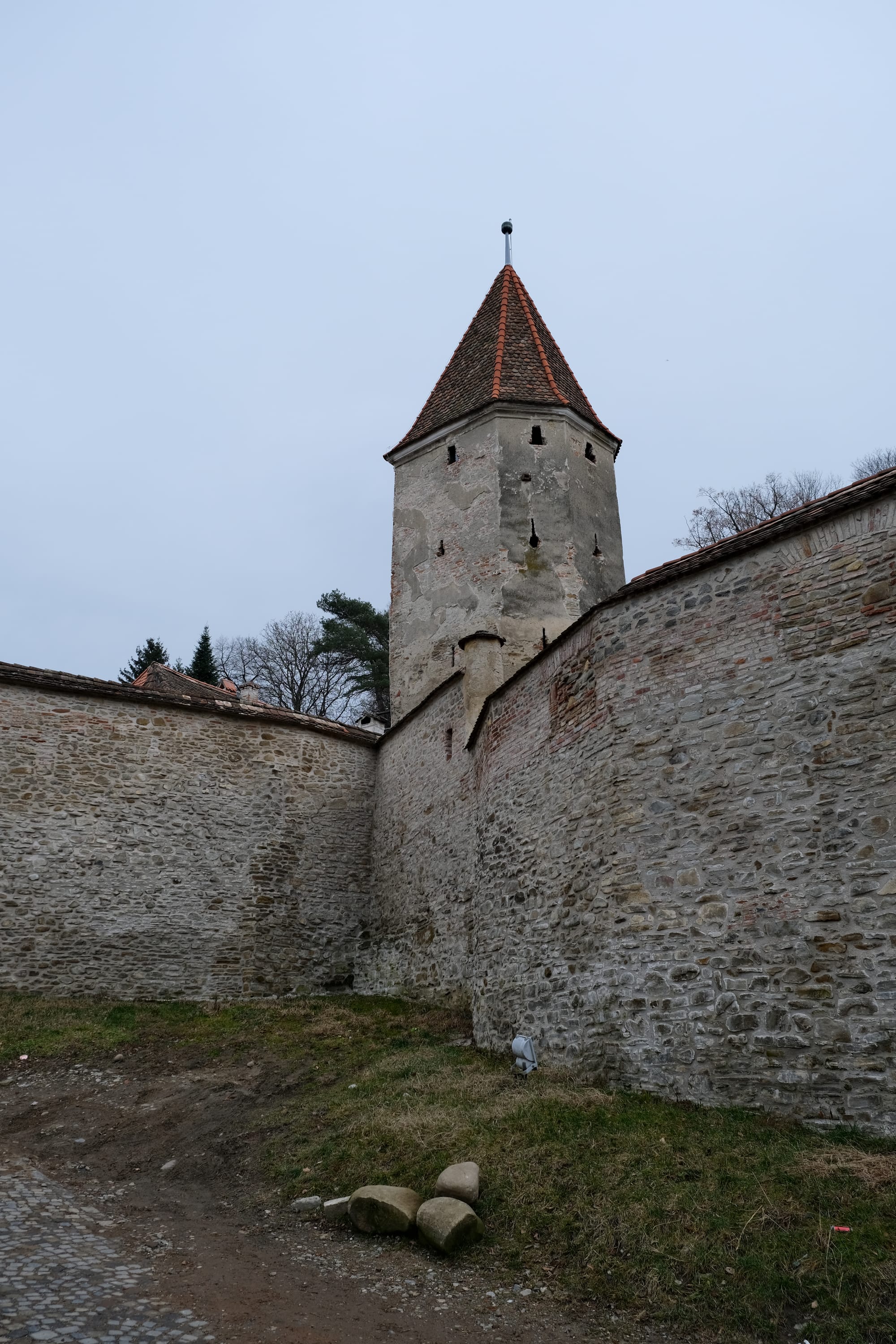
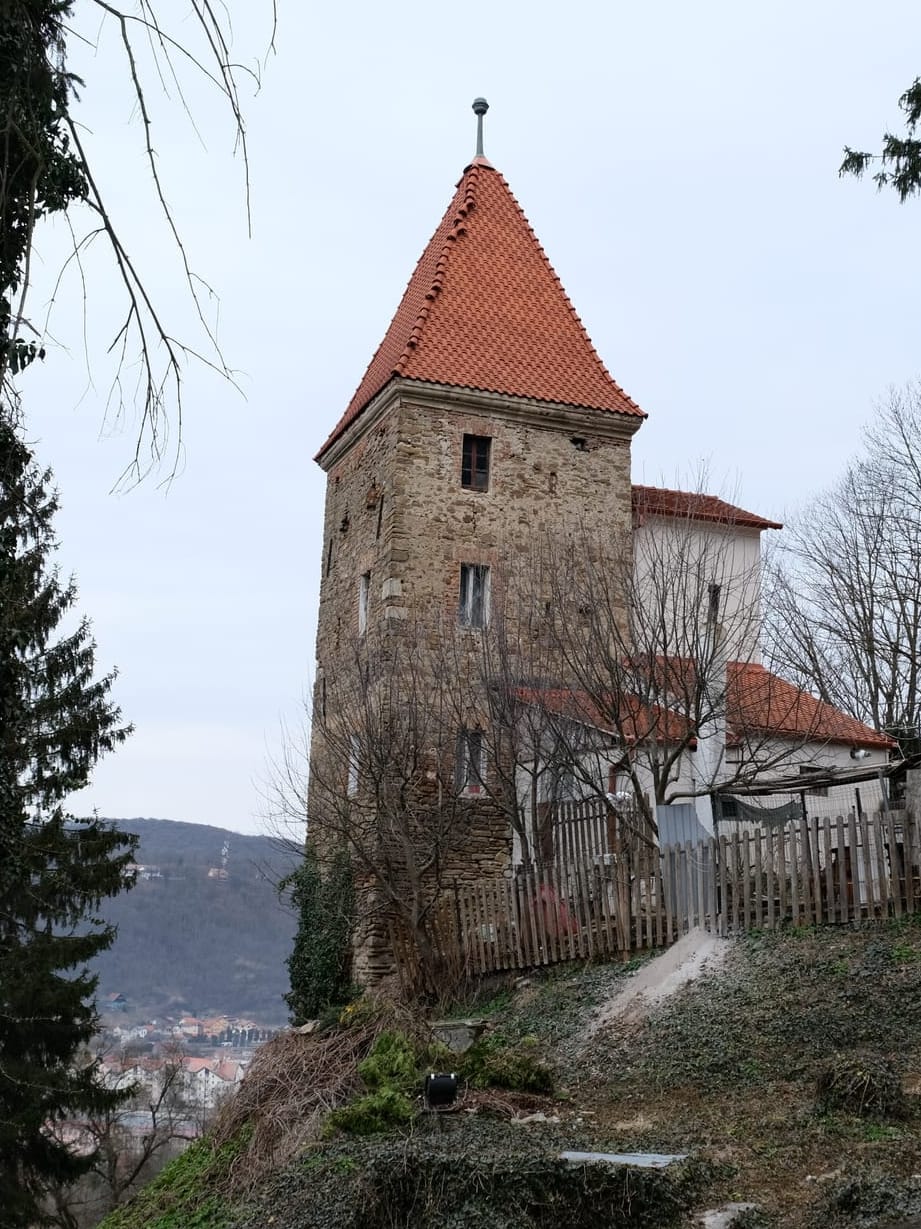
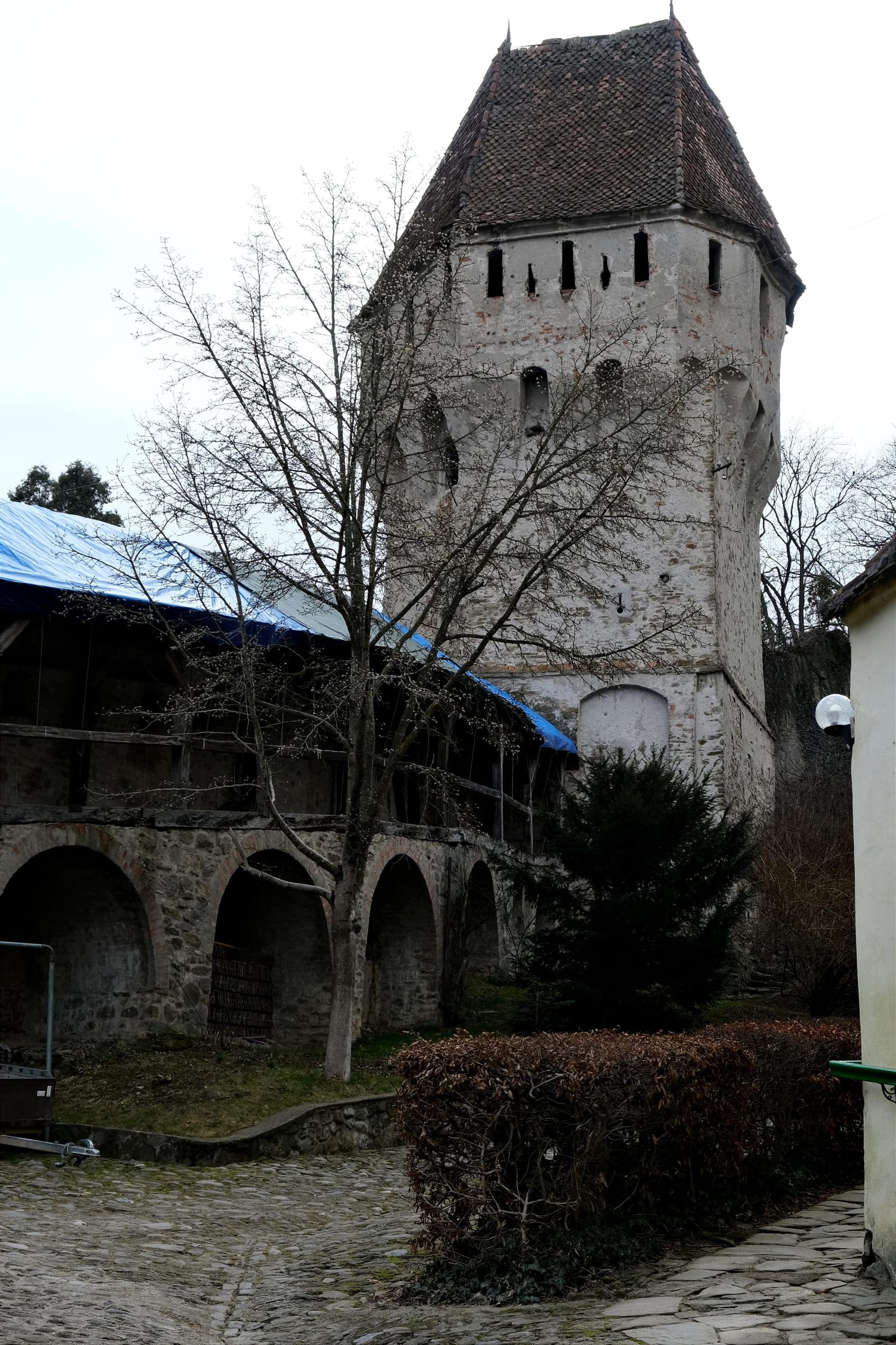
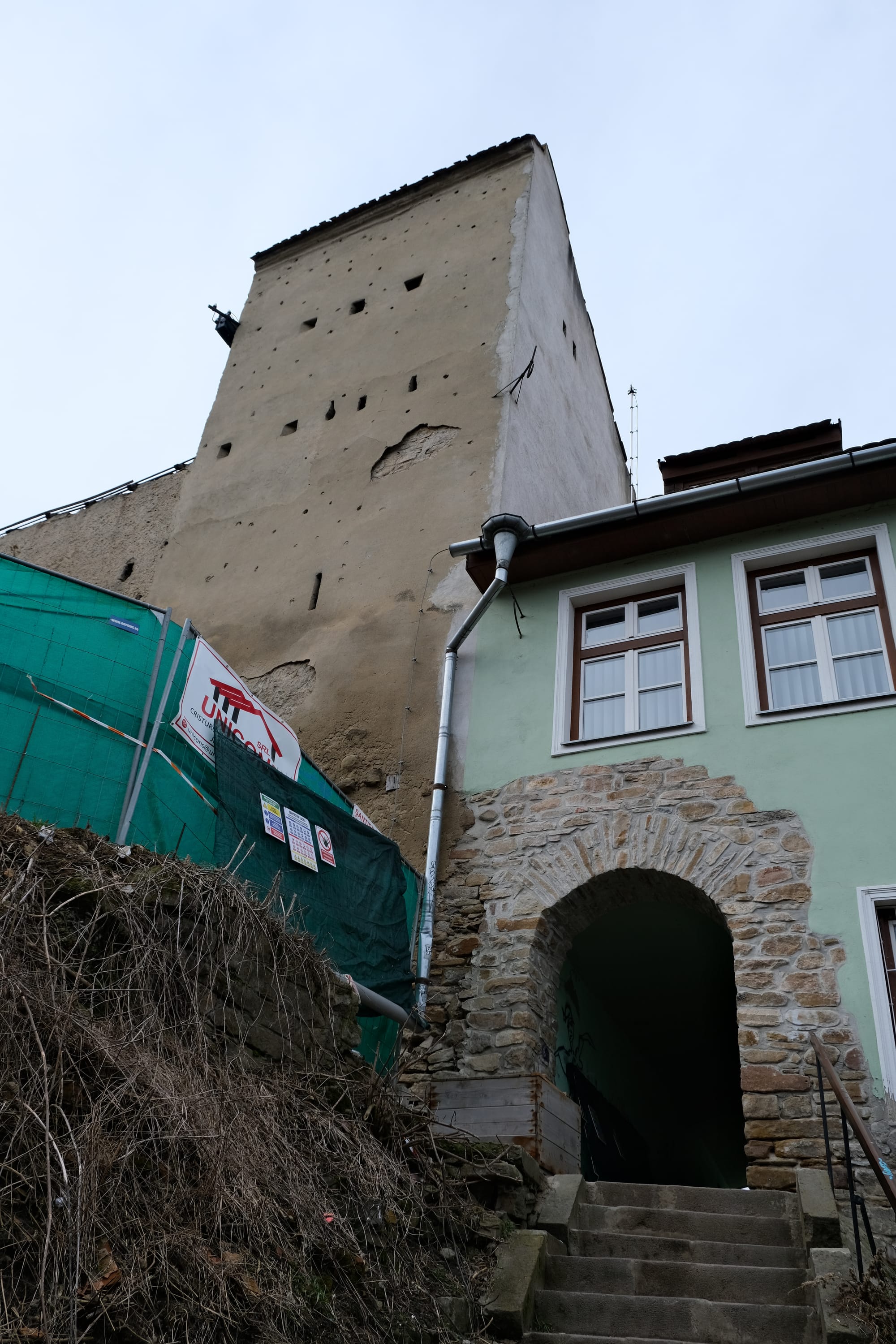
The Guild Towers in order: Blacksmiths' Tower, Shoemaker's Tower, Tailors' Tower, Furriers' Tower, Butchers' Tower, Ropemakers' Tower, Tinsmiths' Tower, Tanners' Tower.
I believe there were 15 guilds historically, each with their own tower. However only nine towers have survived to this day (including the clock tower, not pictured in the 8 above). I really liked the guild towers and I made sure to photograph each one of them, it was my quest to collect them all. I have placed the photos above in the order that you would encounter them if you circled the citadel wall, starting at the clock tower.
The Tailors' Tower was larger than the others and historically served as the second gateway into the city, it is on the opposite side to the clock tower. I believe it used to be the same size and shape as the clock tower but was destroyed and rebuilt later. Some of the towers were really close to each other: The Furriers' Tower and Butchers' Tower were on opposite sides of another small gateway, and the Tinsmiths' Tower and Tanners' Tower were near each other as well. The Reopemakers' Tower was next to the church on the hill and is the residence of the groundskeeper. Two of these towers are now museums but they were both closed on the Sunday I visited.
The Church on the Hill
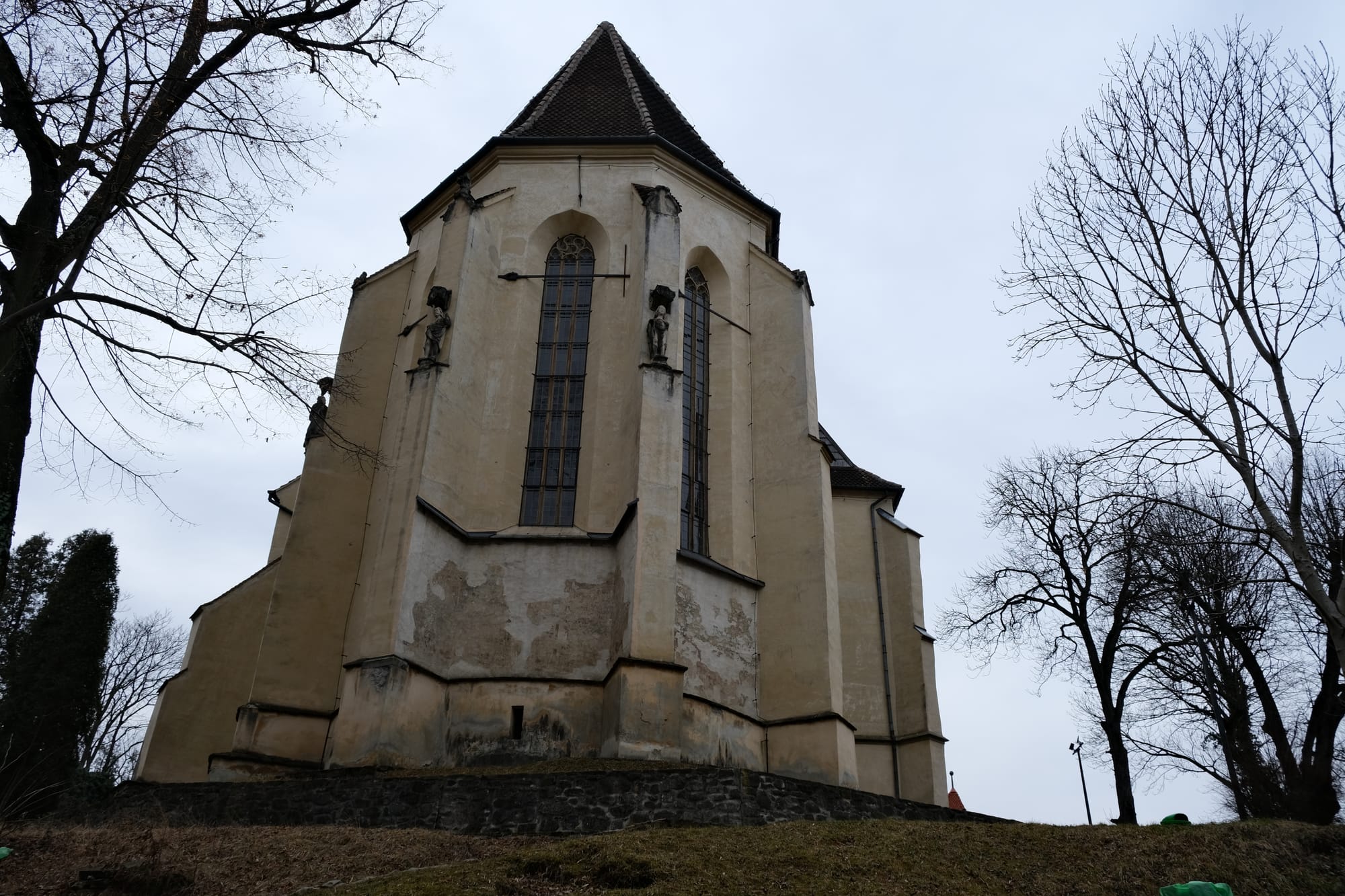
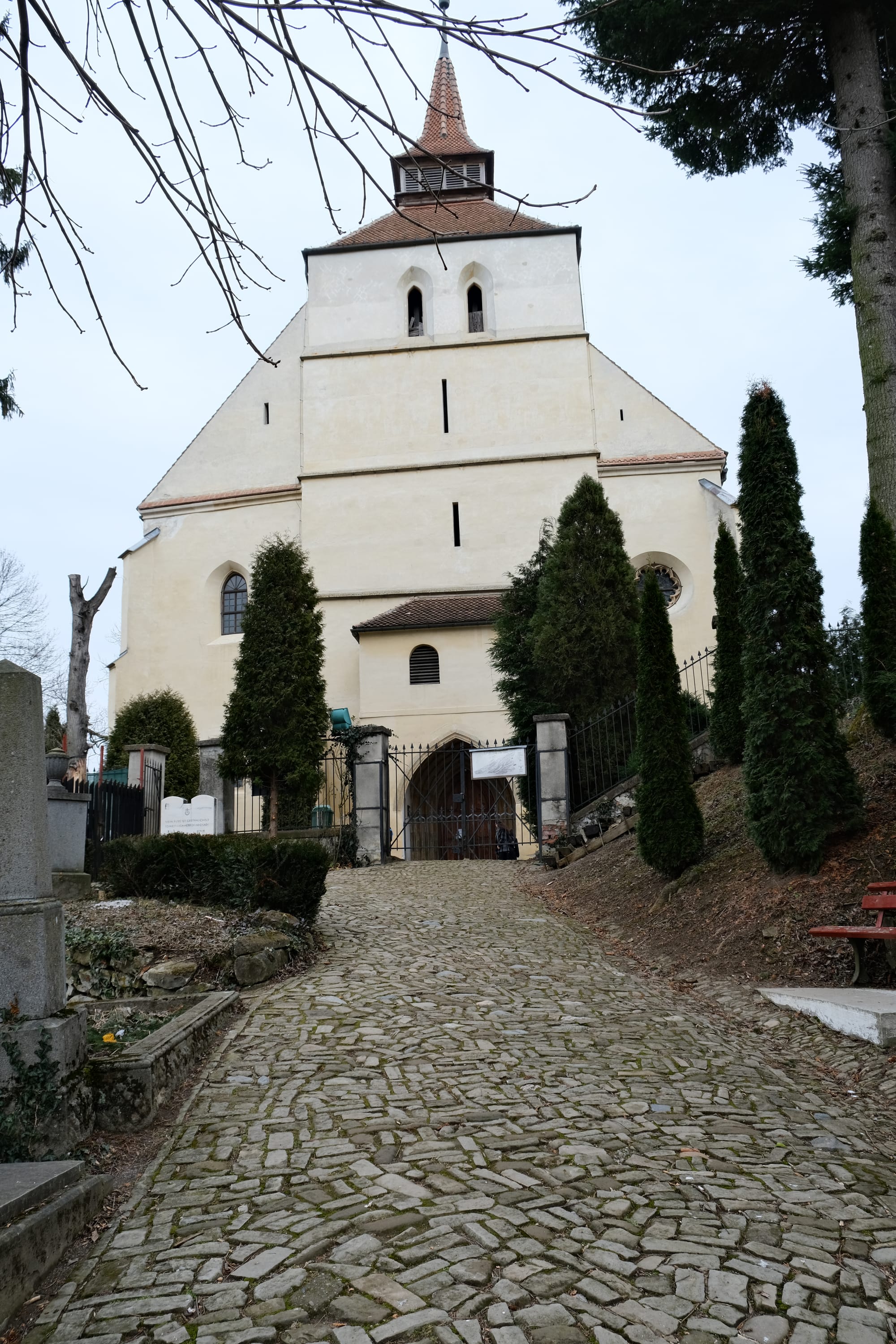
The old citadel of Sighișoara is situated on a hill, but most of the main buildings are situated on the lower part of the hill. The southern end of the hill rises higher and at the highest point is this church, which is known as the "church on the hill".
There is also a school next to the church that in medieval times was attended by students living in Sighișoara. Access to the church and the school is made by the Covered Stairway. I believe this stairway was built to protect students from the elements on their way to and from school.
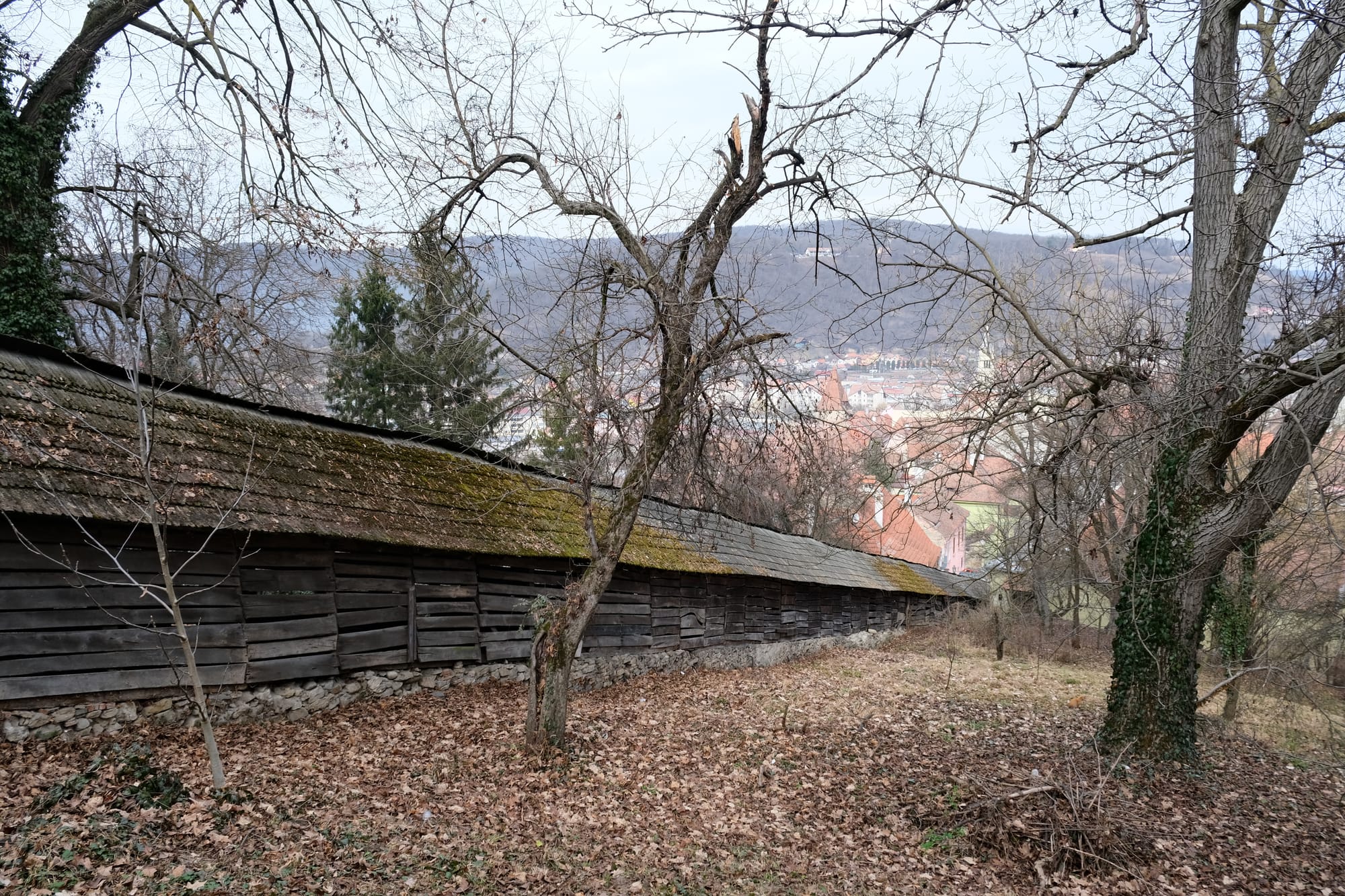
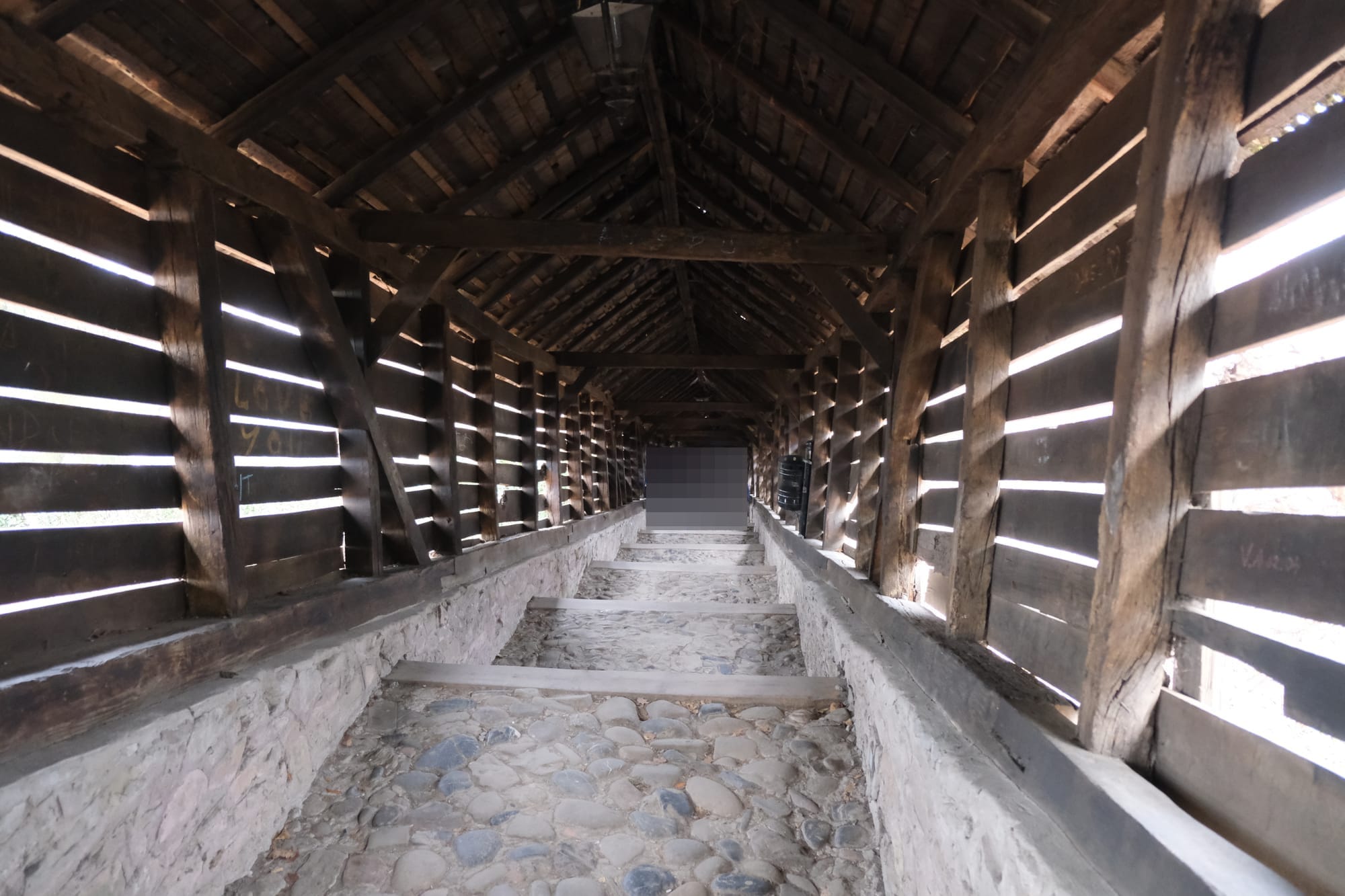
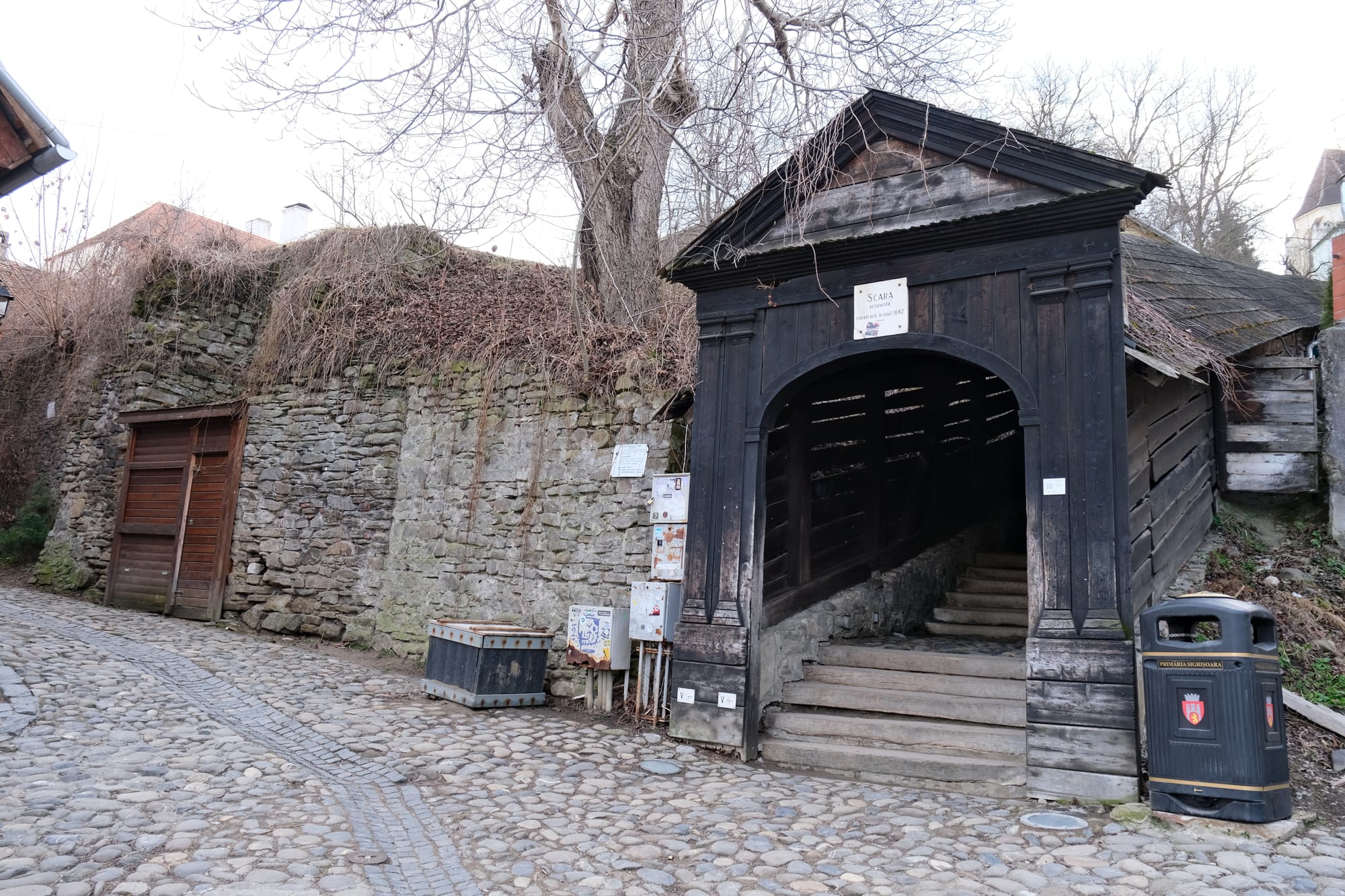
The first two images were taken at the top and the last image taken at the bottom. There are 176 steps in the covered stairway and the inside is actually quite dark, even on a sunny day.
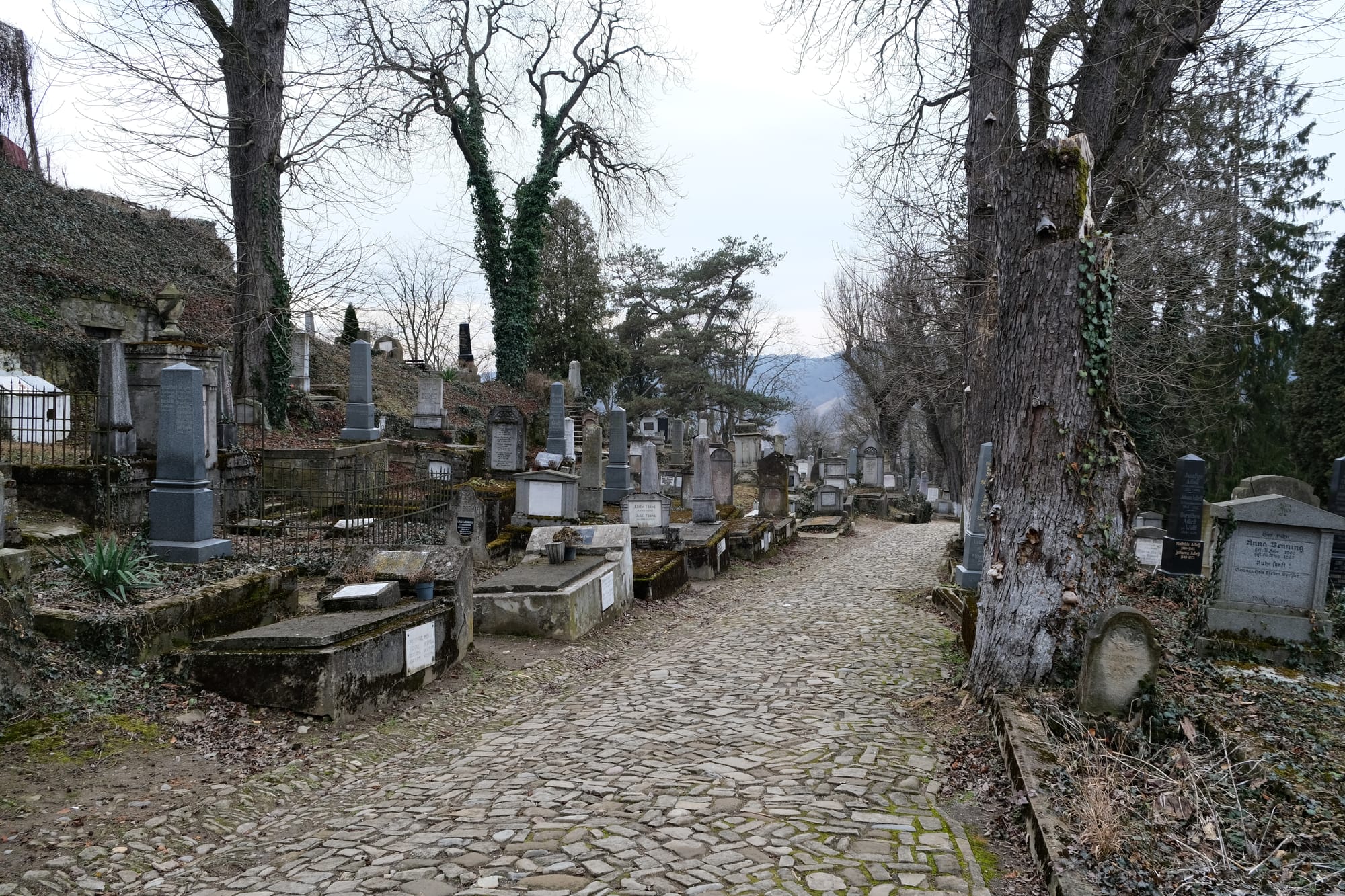
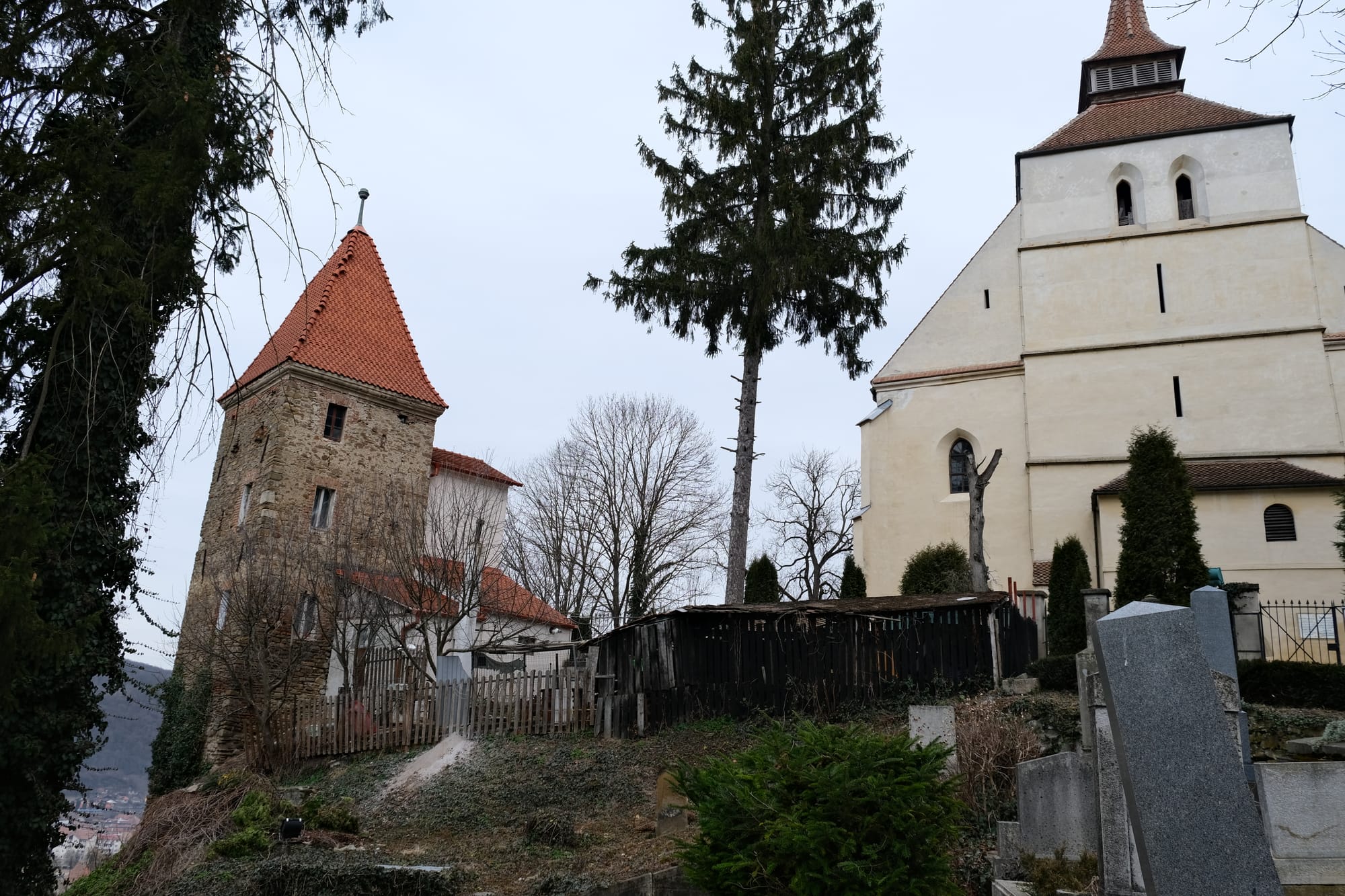
The other side of the hill had a large graveyard, pictured in the left (first) image. The second image was taken while standing in the graveyard looking towards the Church on the Hill with the Ropemakers' Tower next to it.
The Streets of Sighișoara
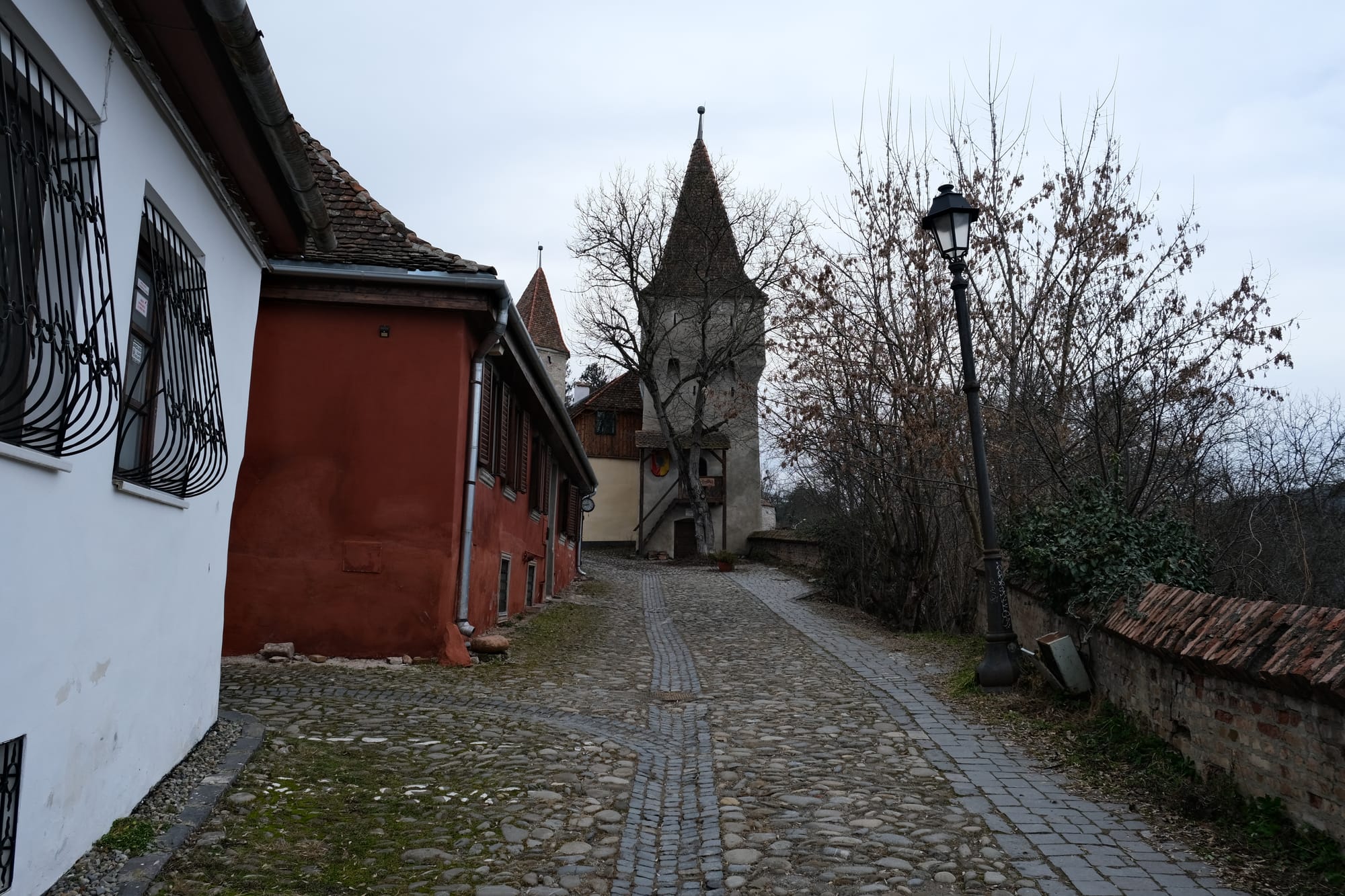
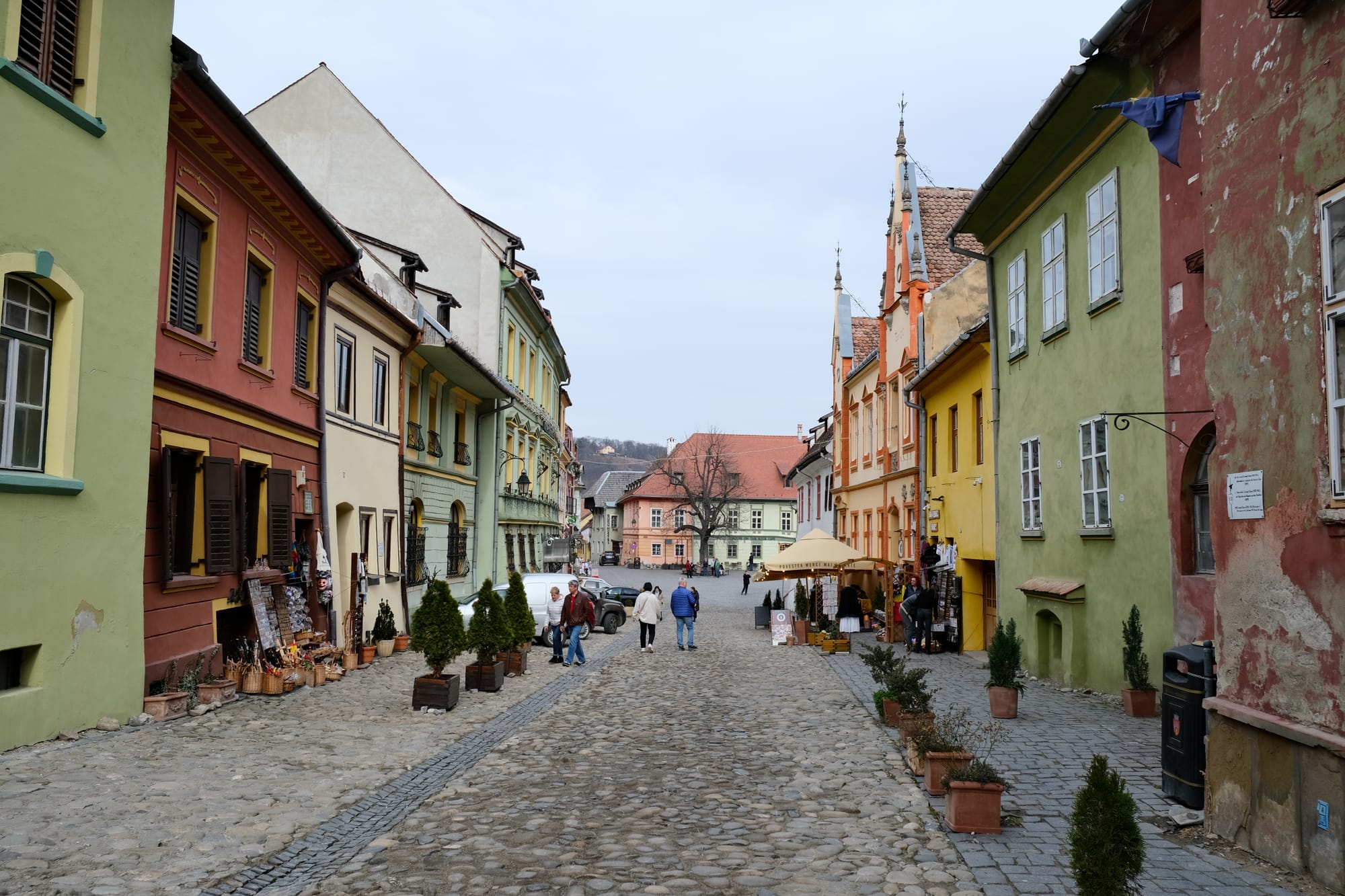
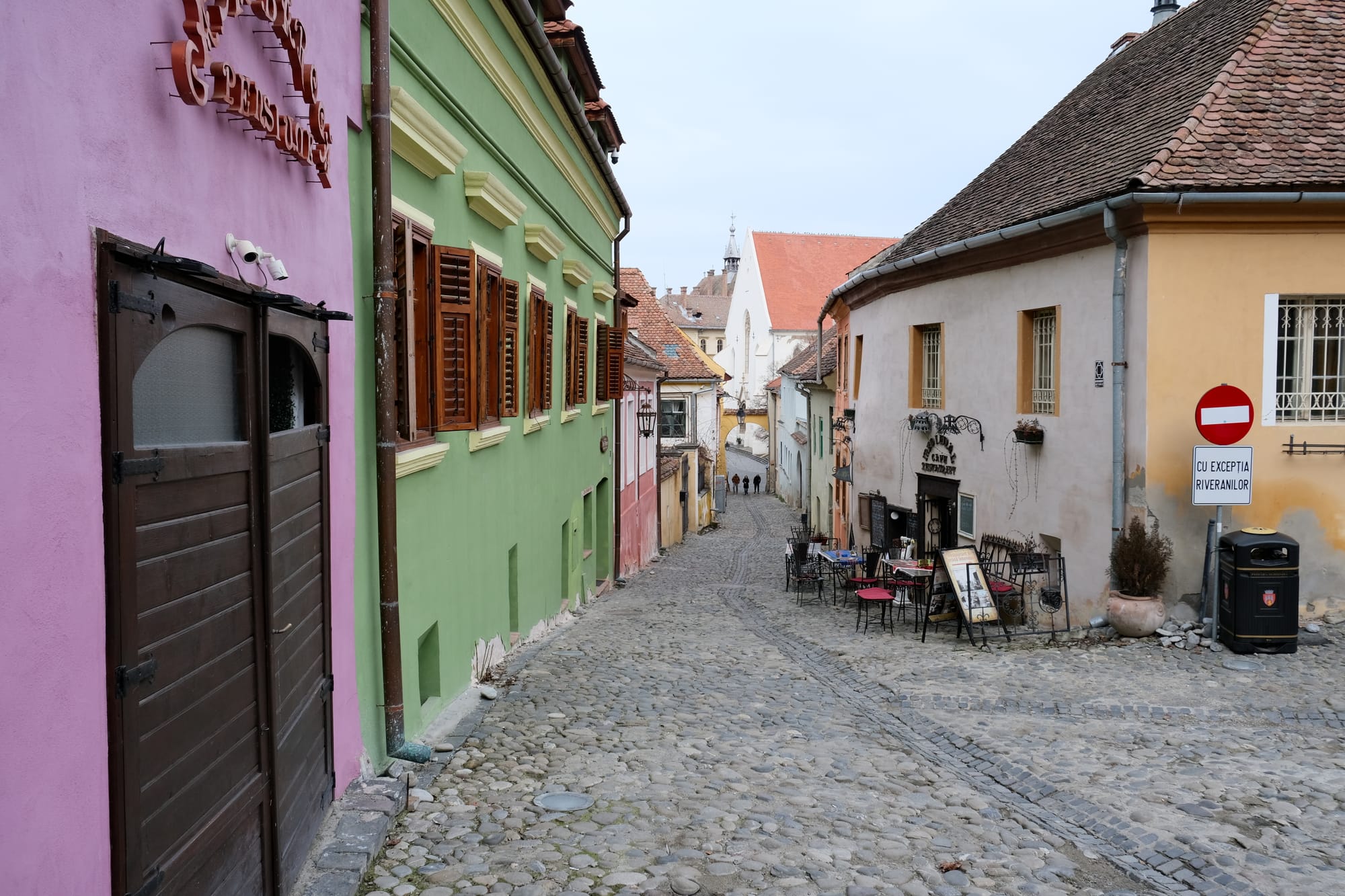
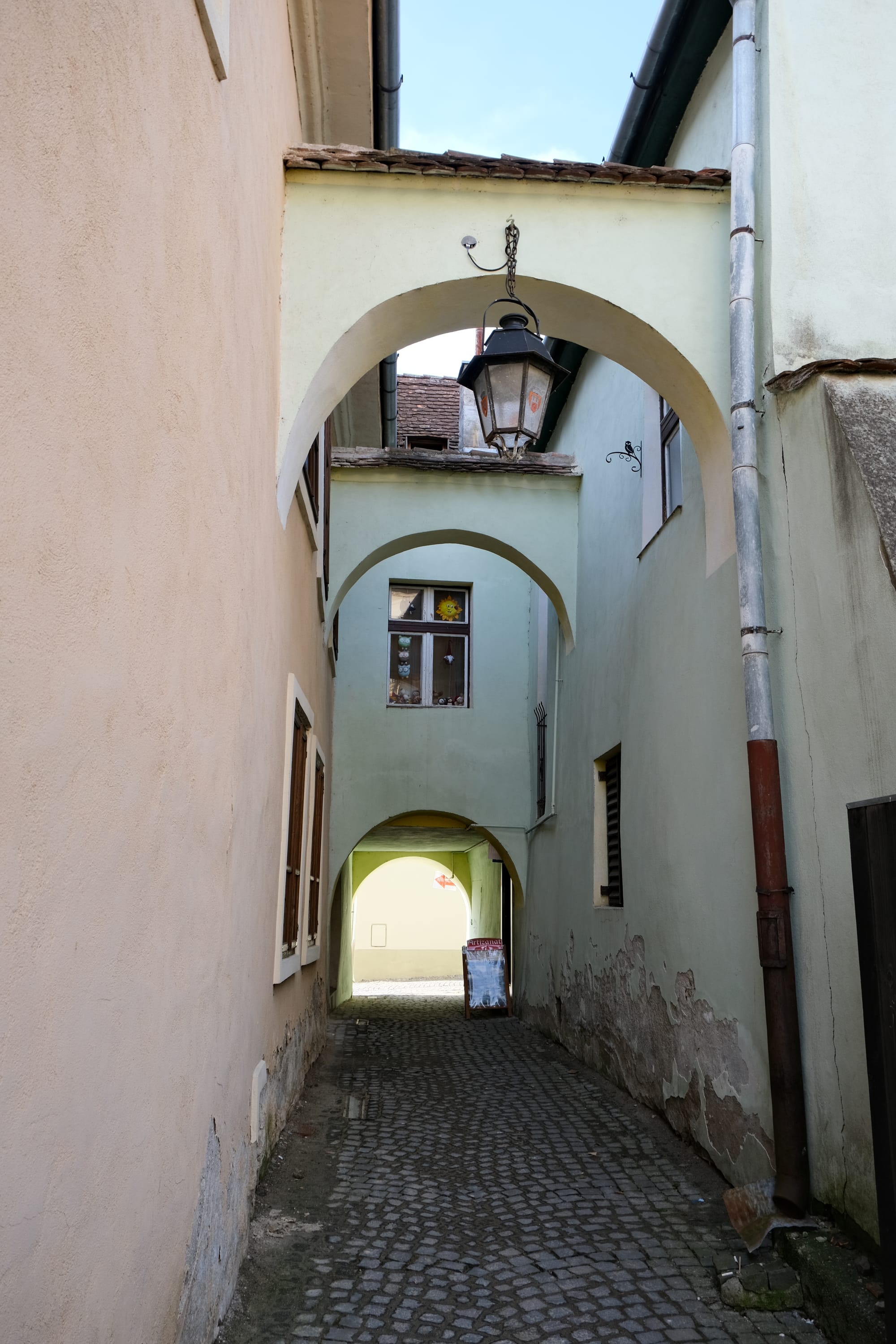
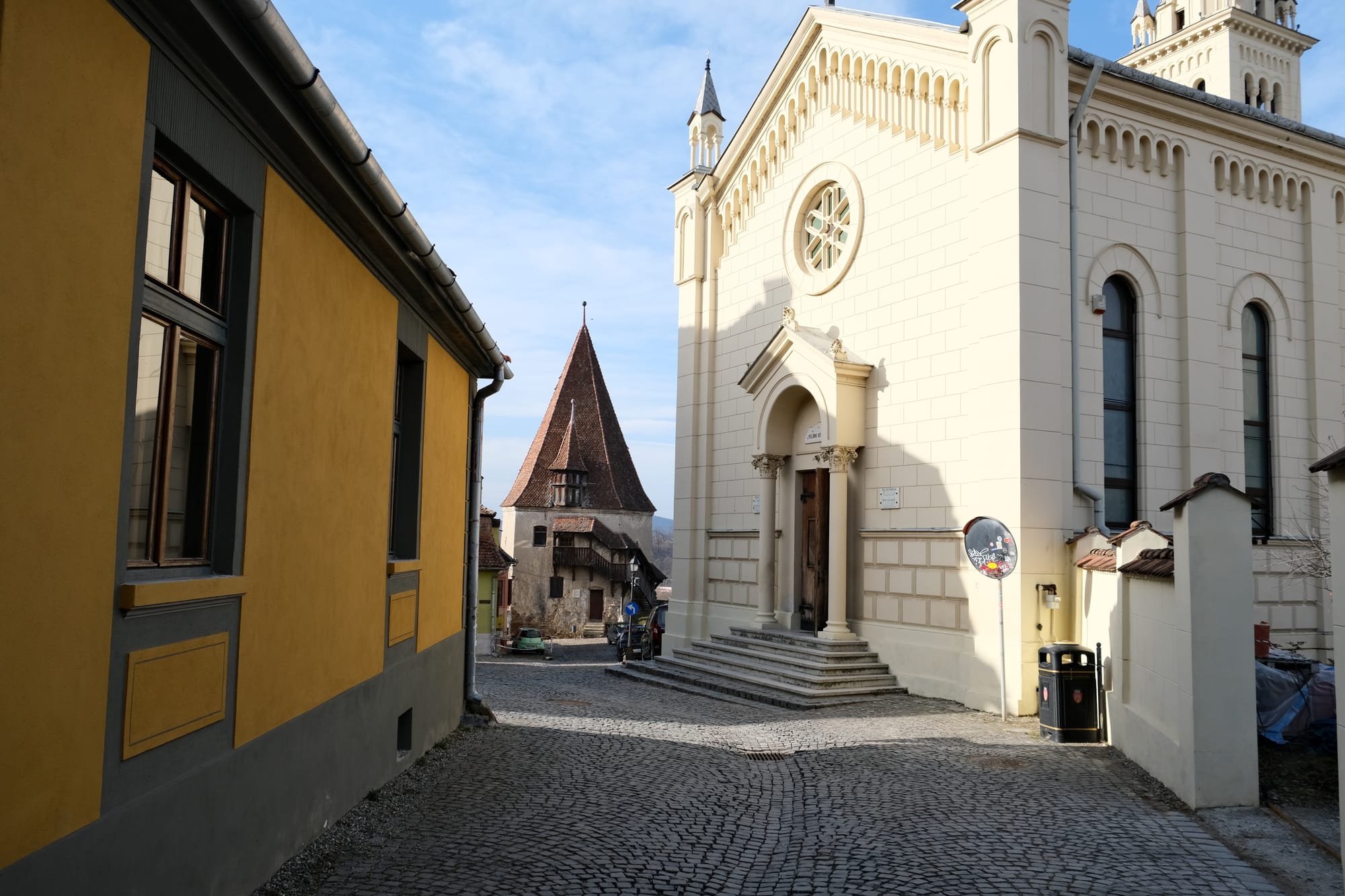
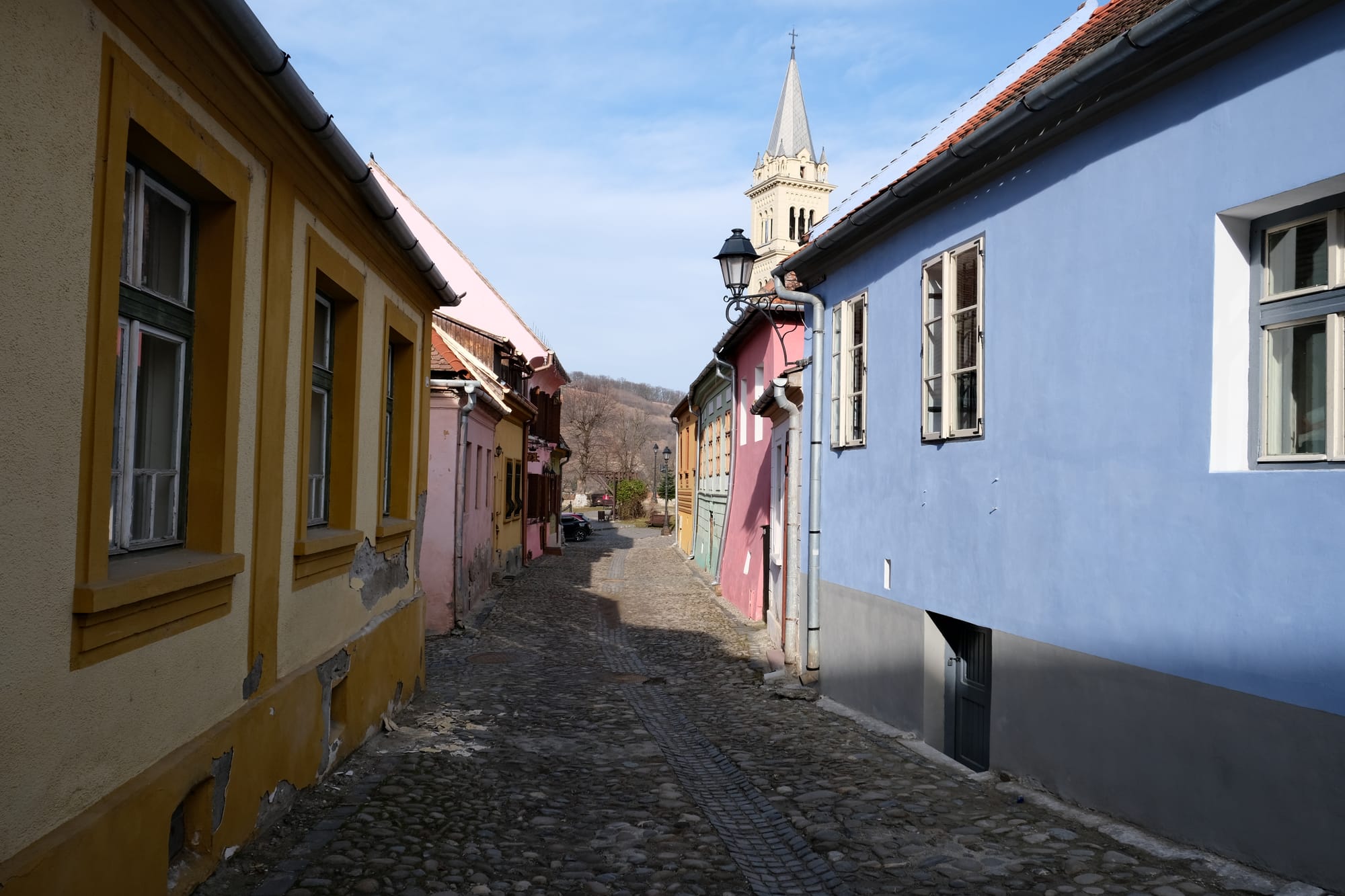
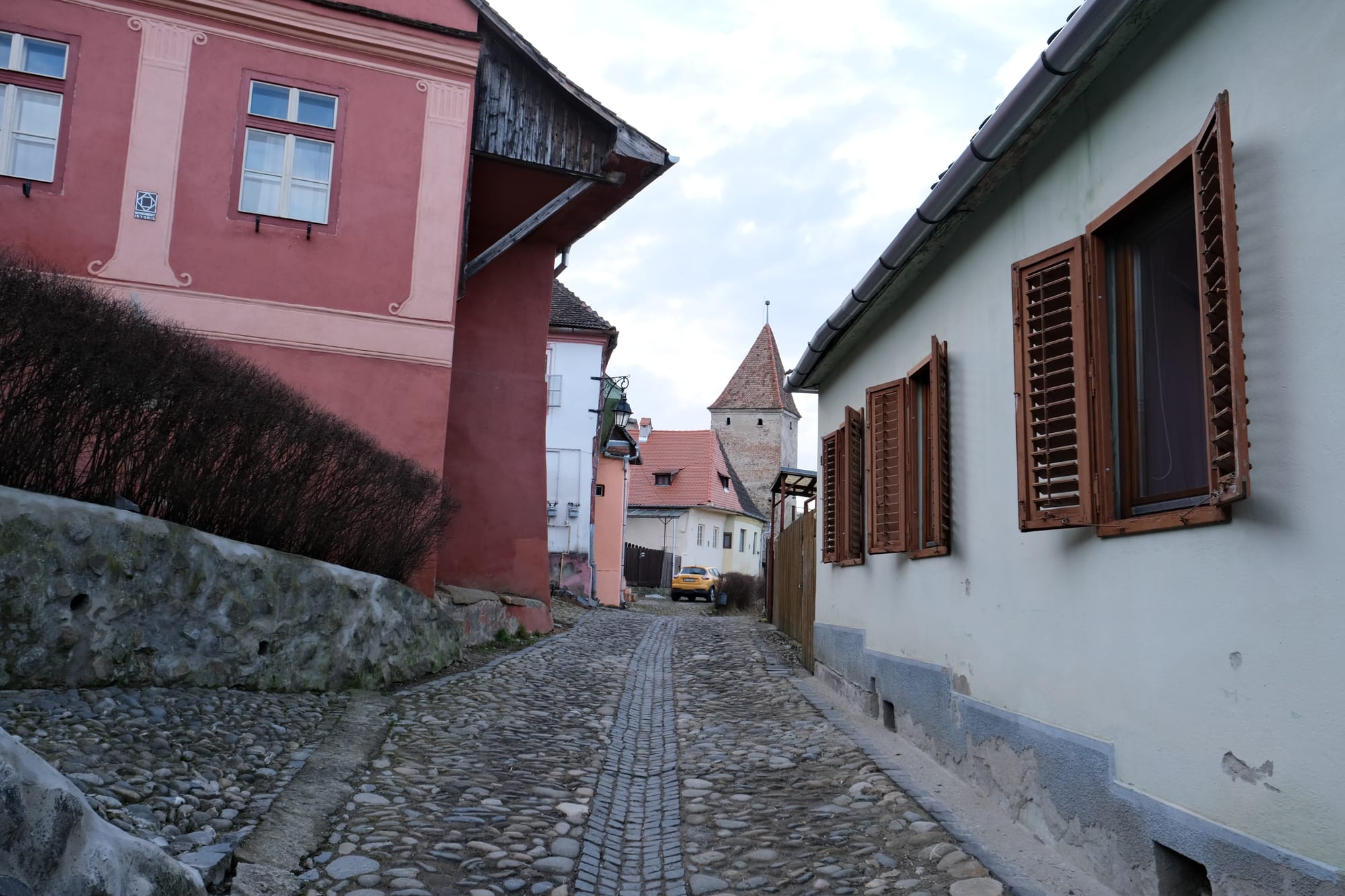
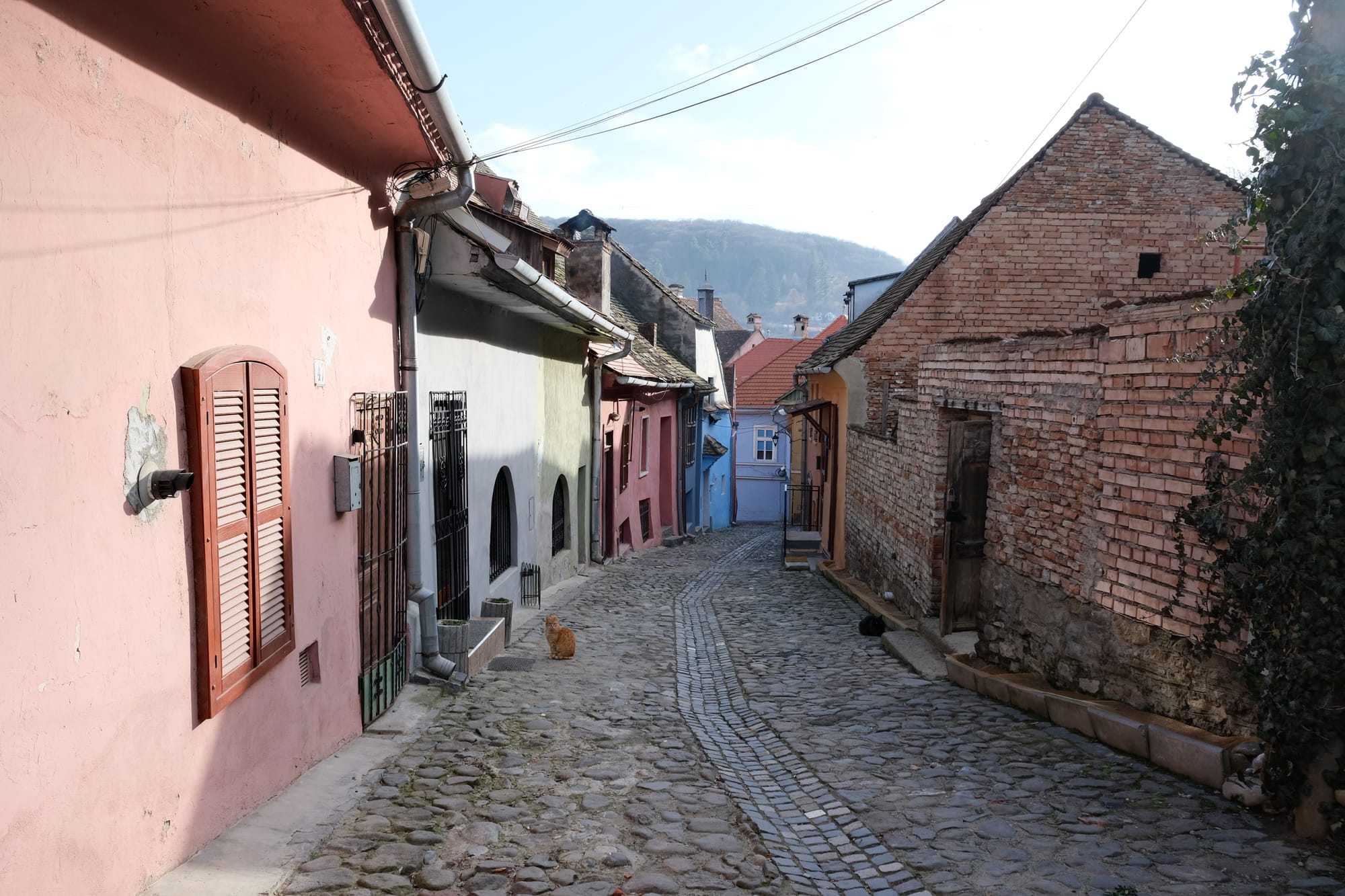
Walking through the streets of Sighișoara was amazing. Every street was picturesque with beautifully coloured buildings and quite often a guild tower visible at the end. I must have walked through the old town streets at least three times and I took so many pictures, I struggled to reduce them to the ones above. Exploring the streets was one of my favourite things to do in Sighișoara.
The Buildings
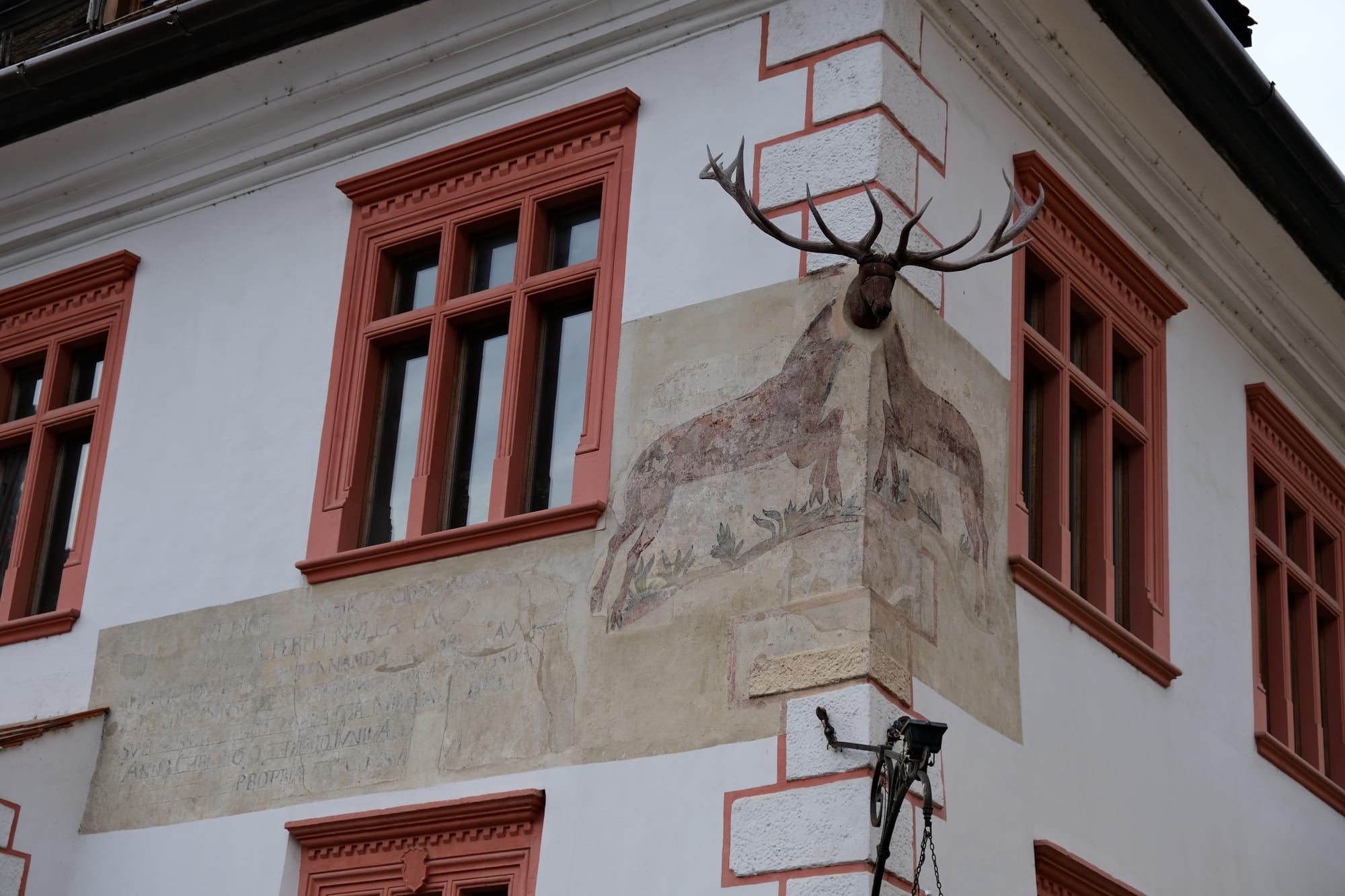
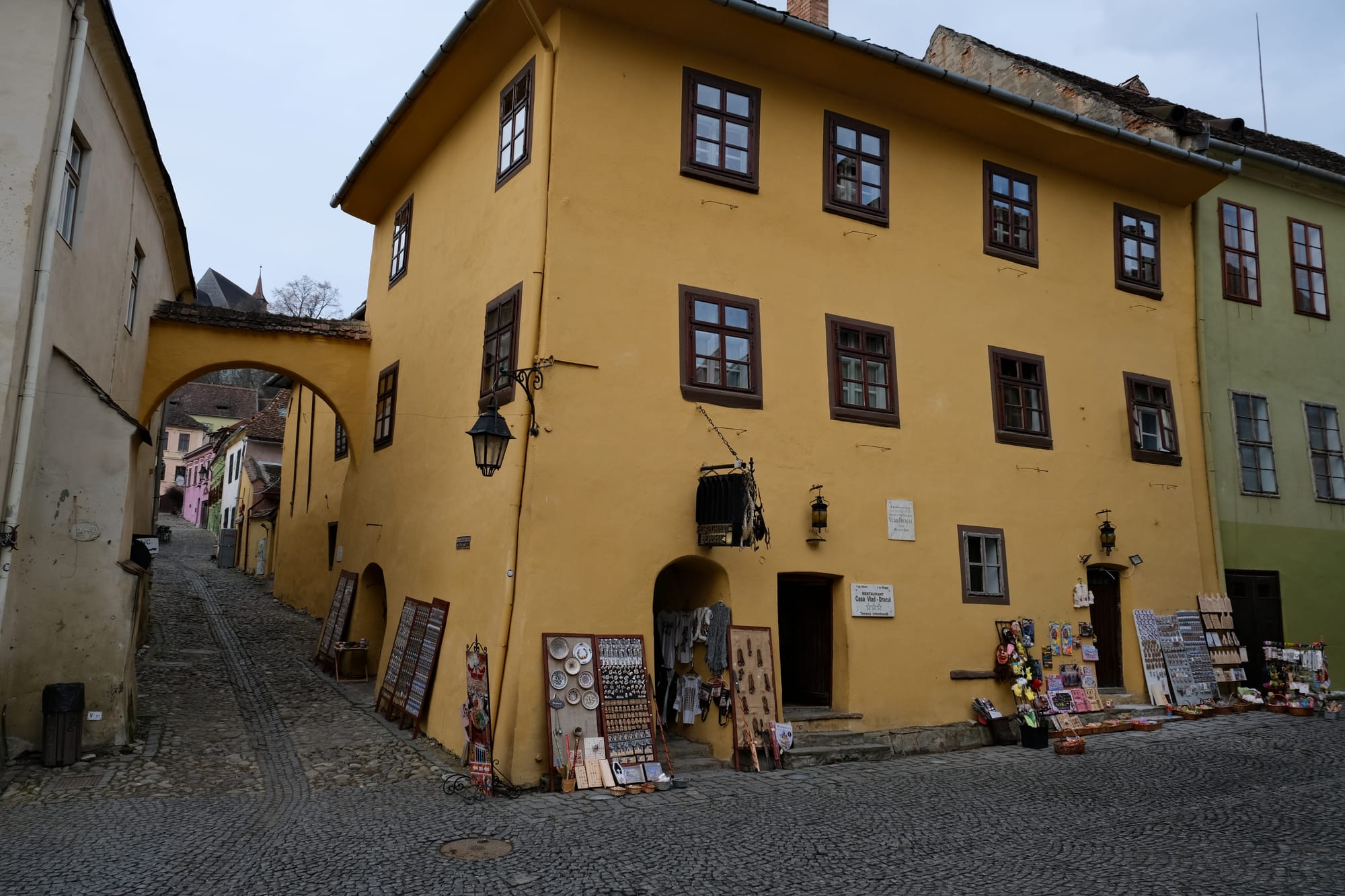
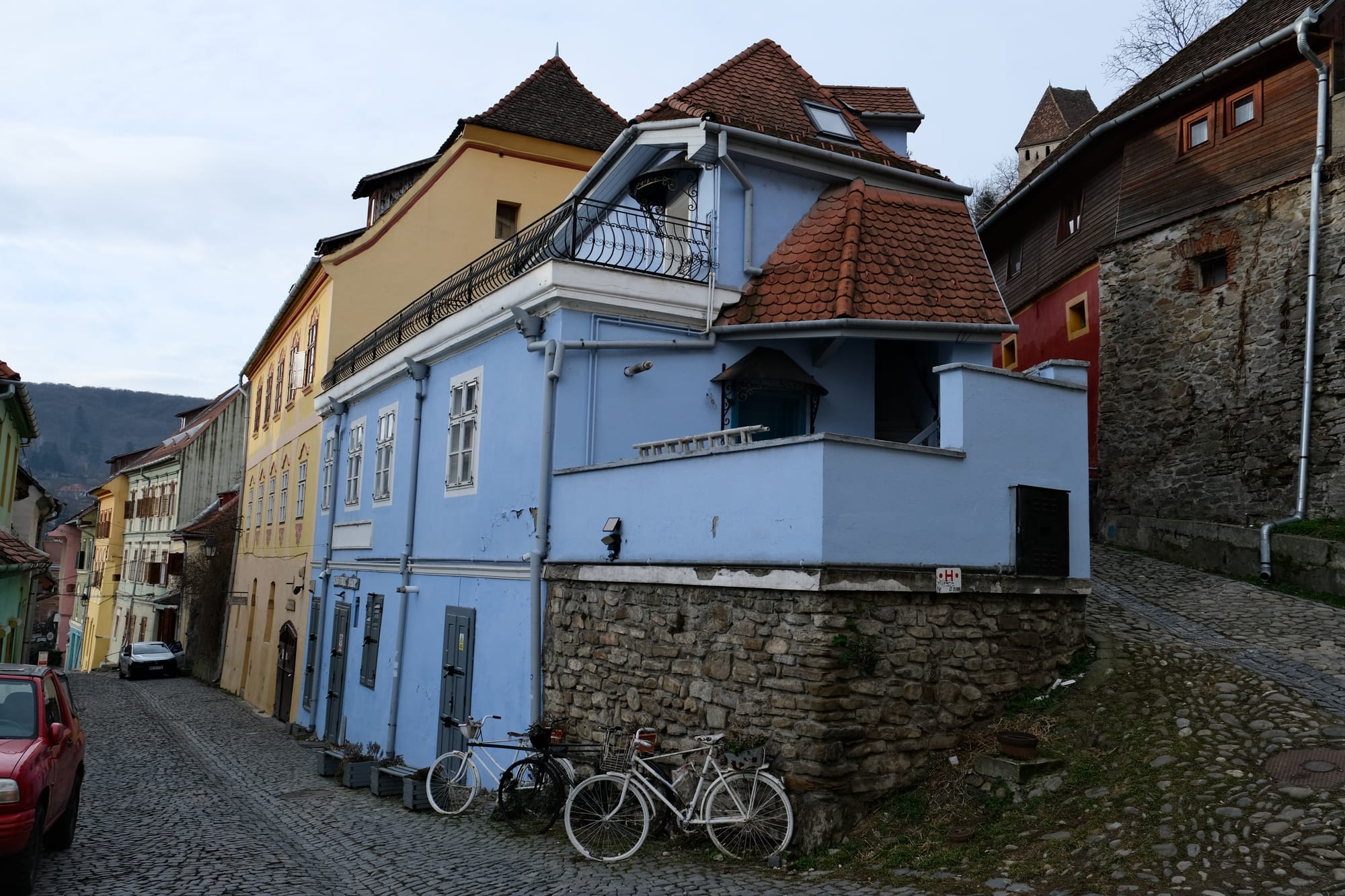
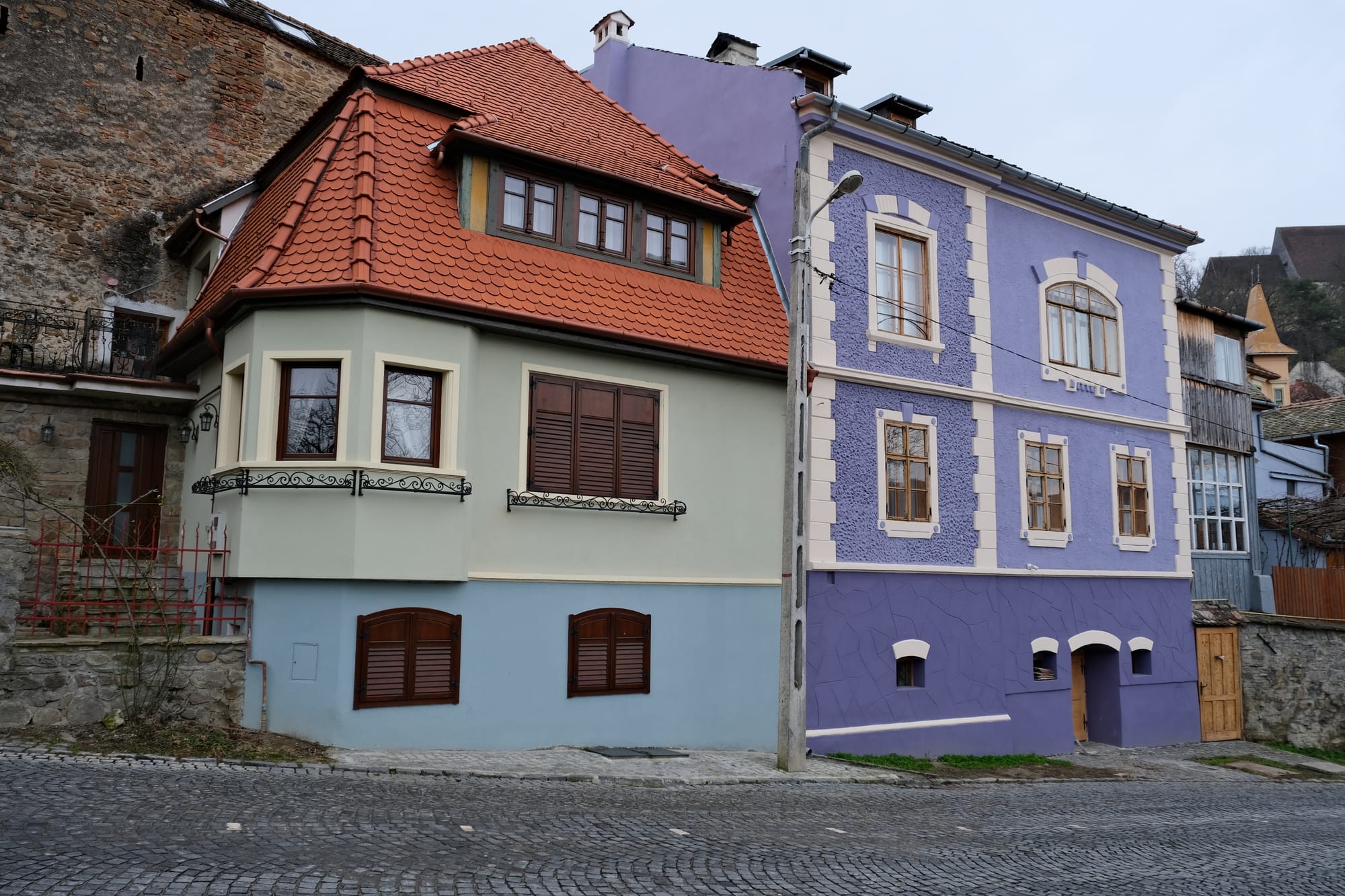
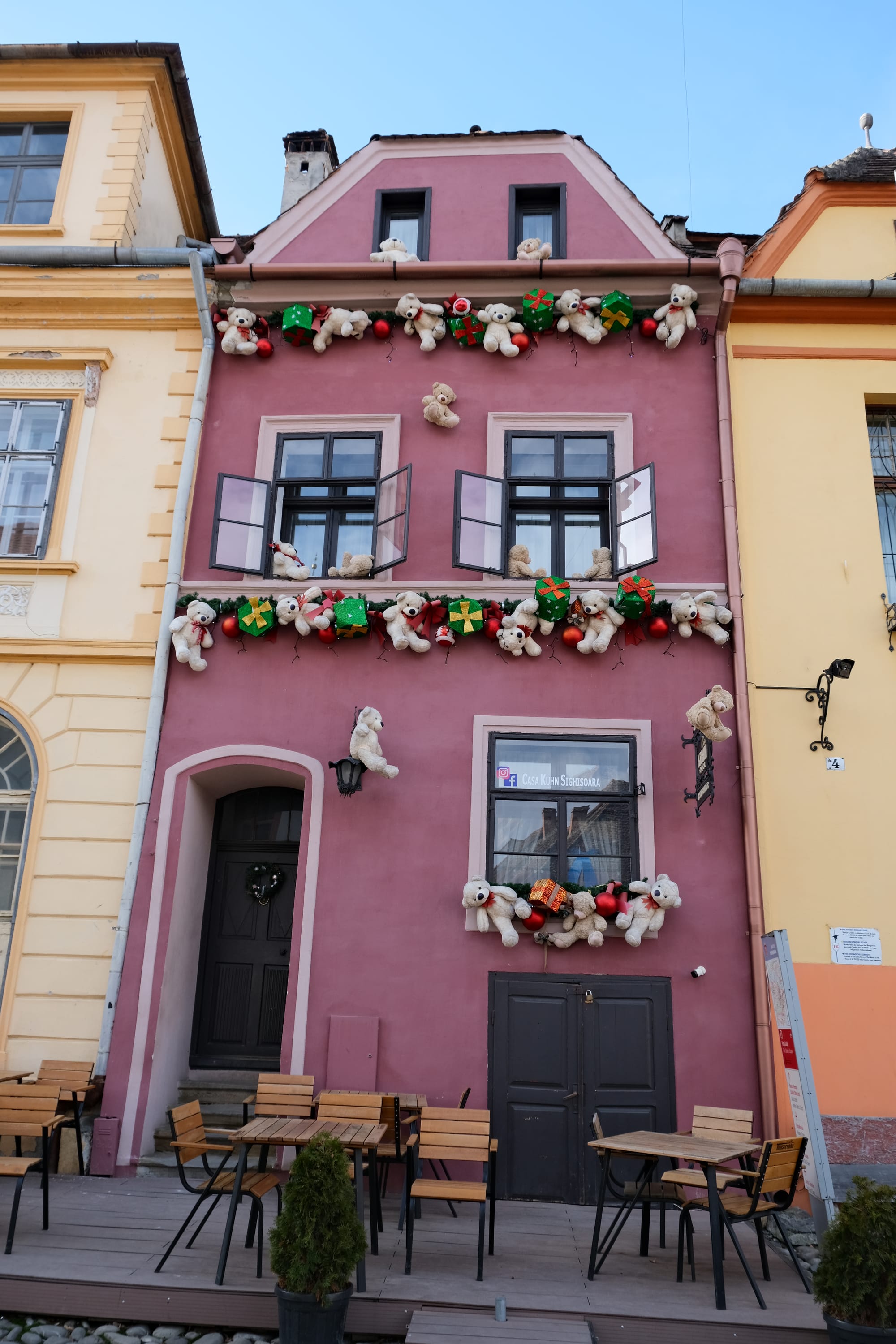
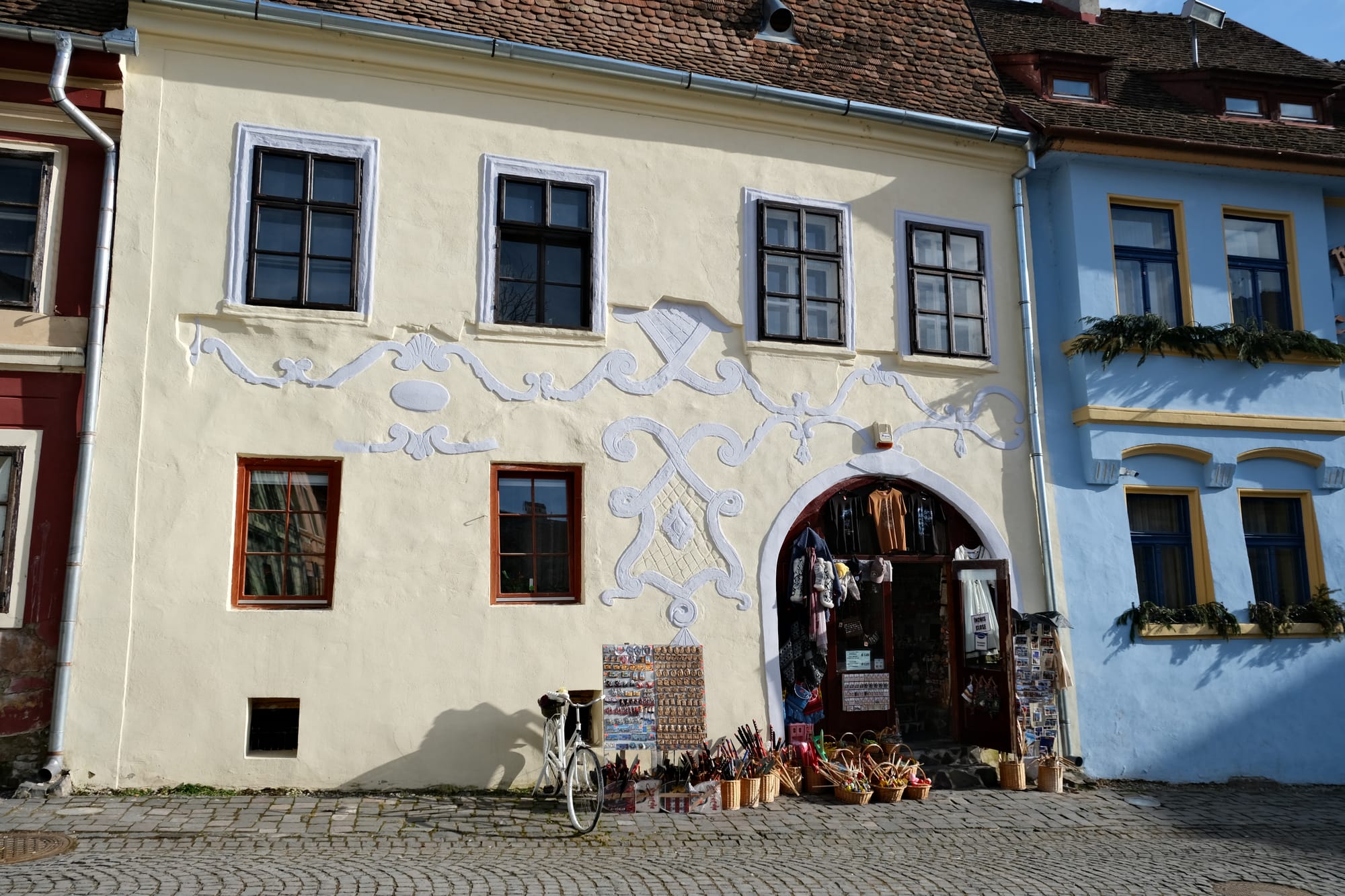
As pretty as the streets are, it is the buildings that make them so, and Sighișoara has some beautiful buildings. Pictured above are some of my favourites, all were taken in and around the medieval citadel. Fun fact: the yellow building, in the second image, is the birthplace of Vlad Dracula, now they have a Dracula themed restaurant.
Views in and Around the Citadel

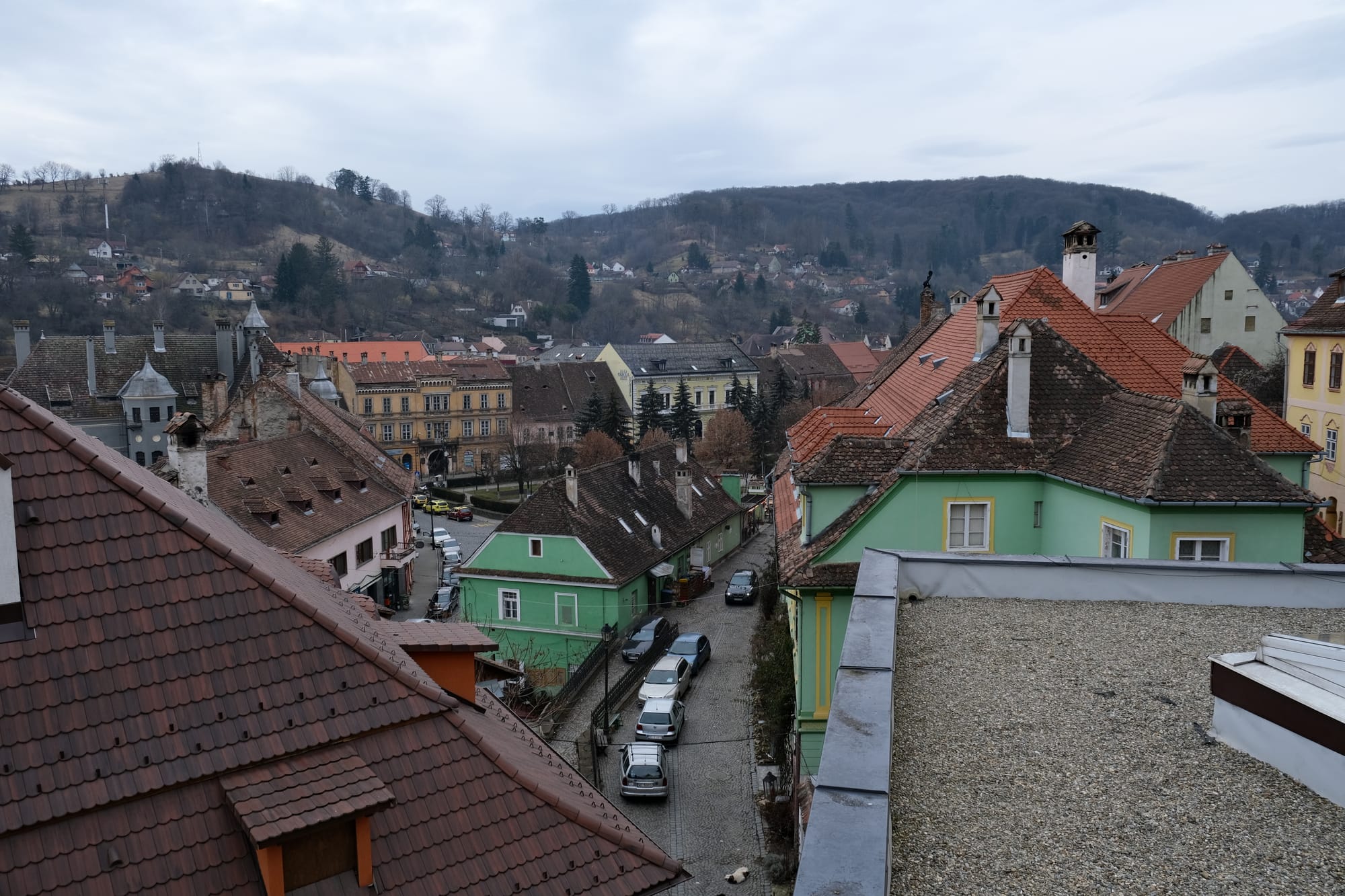
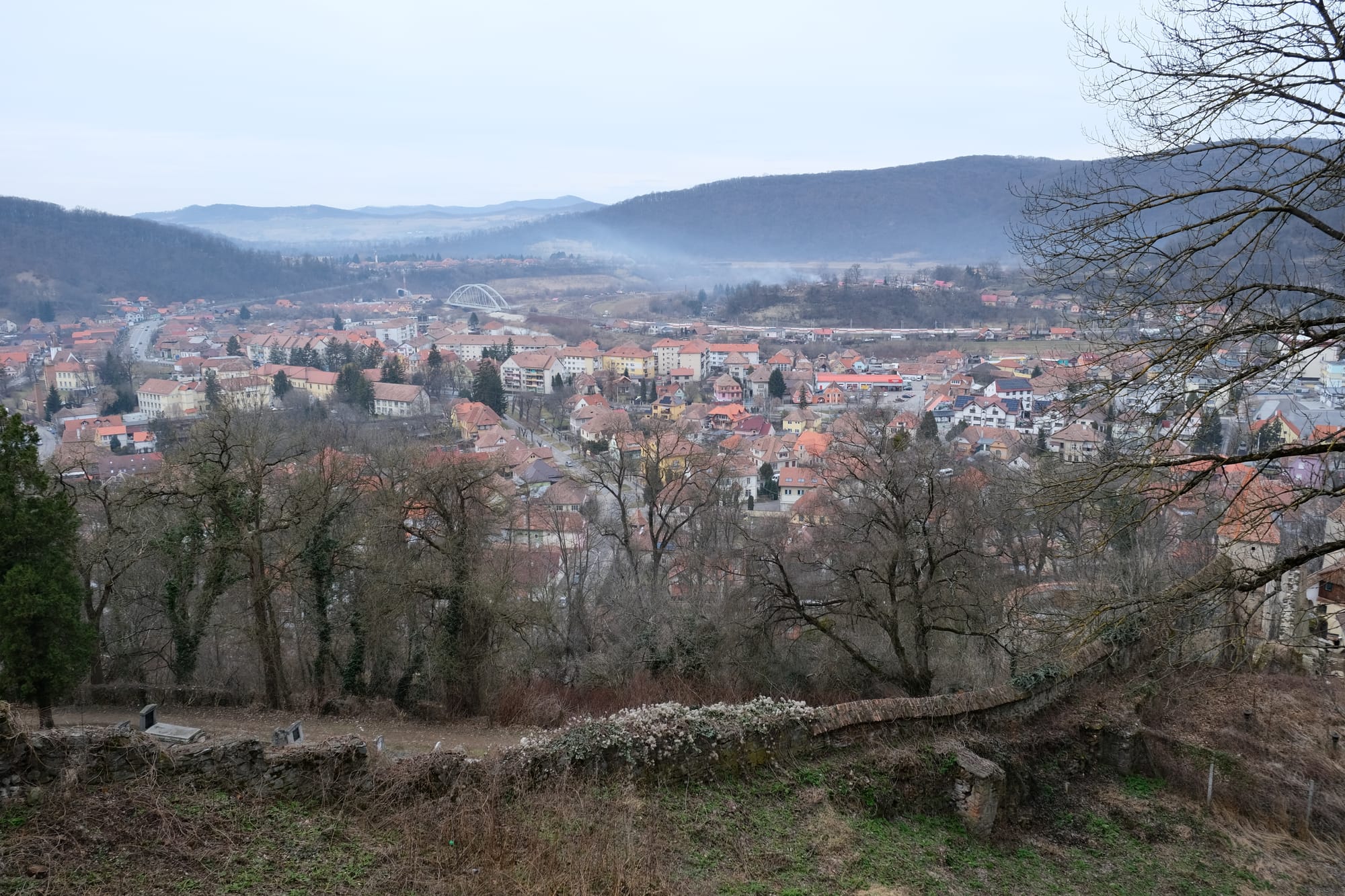
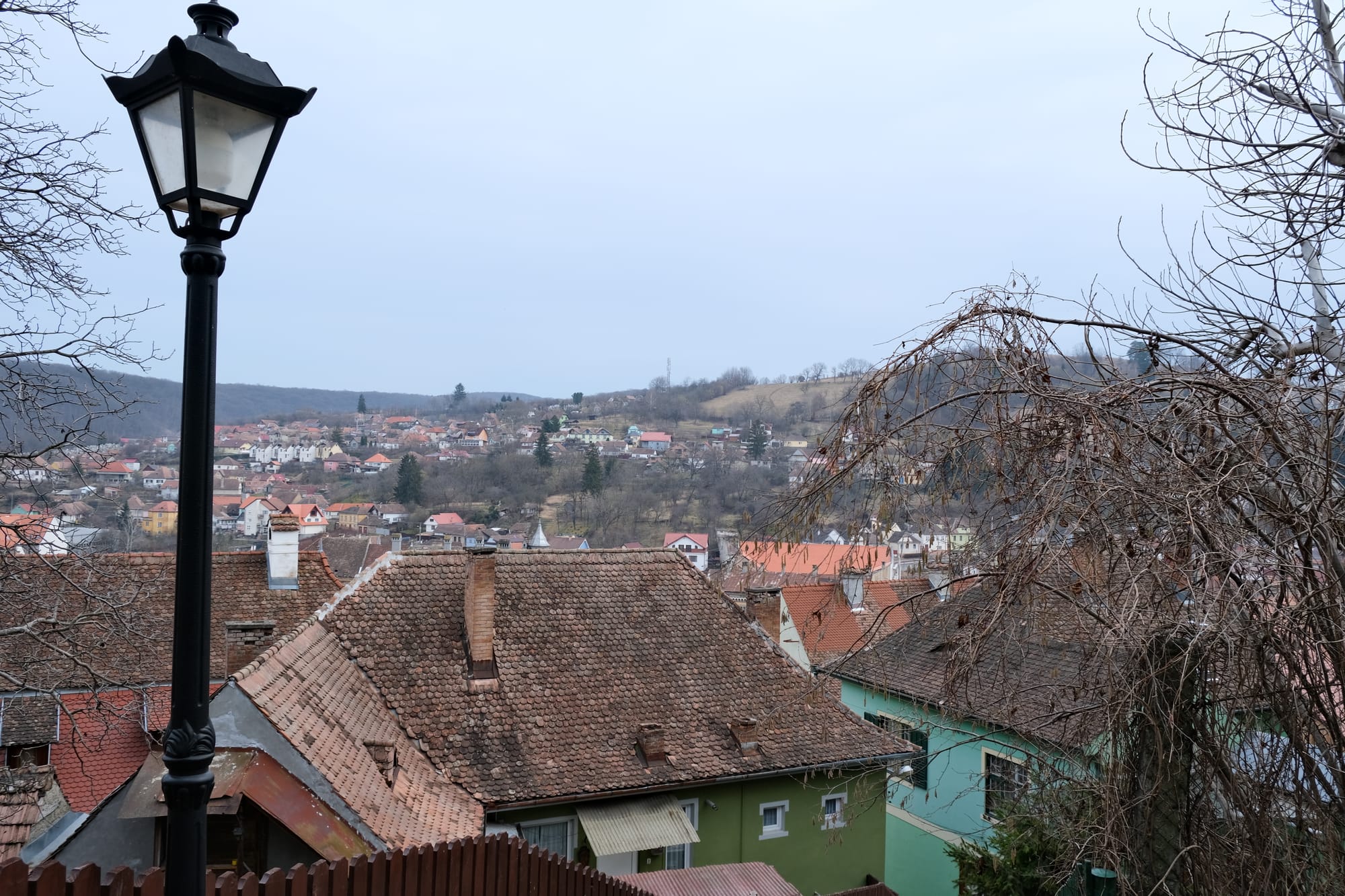
As the citadel was built on a hill, it meant that, whenever I was near the walls, there was often a good view into the valley, and the rest of Sighișoara radiating out from the old city centre. The panorama and the second image were both taken near the Clock Tower and the Blacksmiths' Tower, looking eastwards over the city downtown. The third image was taken from the hill top, near the Ropemakers' Tower, looking to the west. The fourth and last image was taken near the Tanners' Tower, also looking east, but further south compared to the earlier pictures.
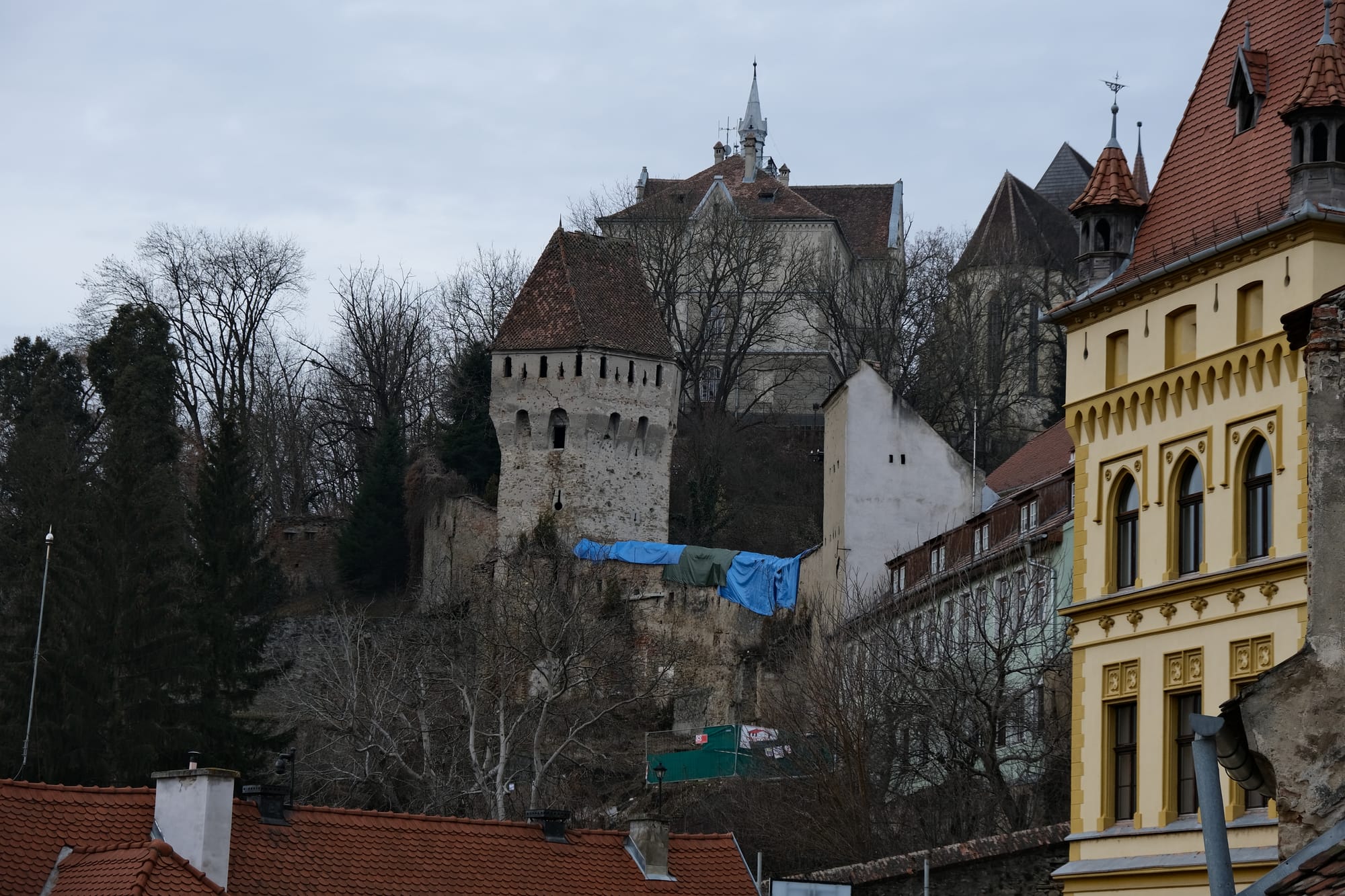
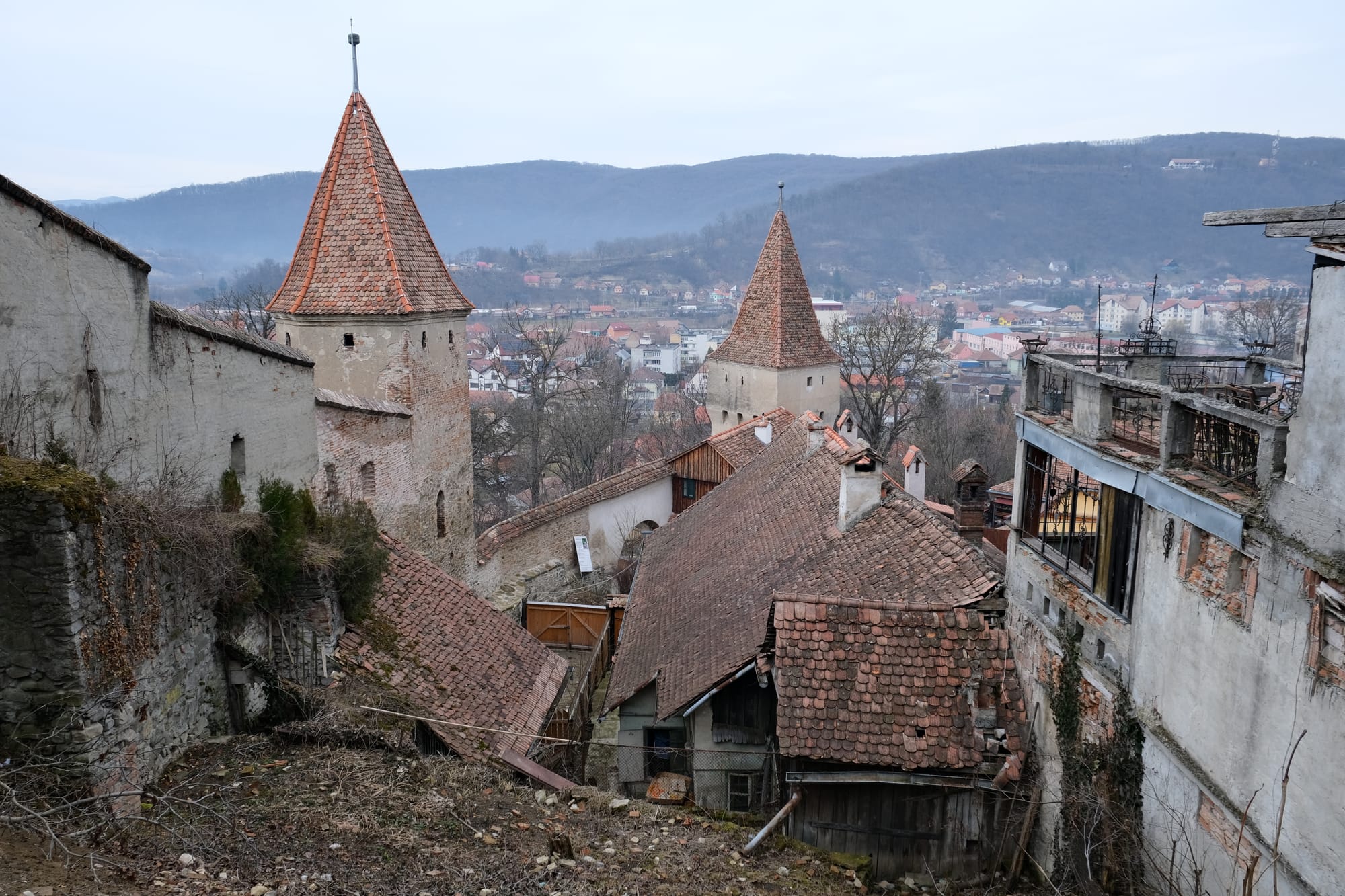
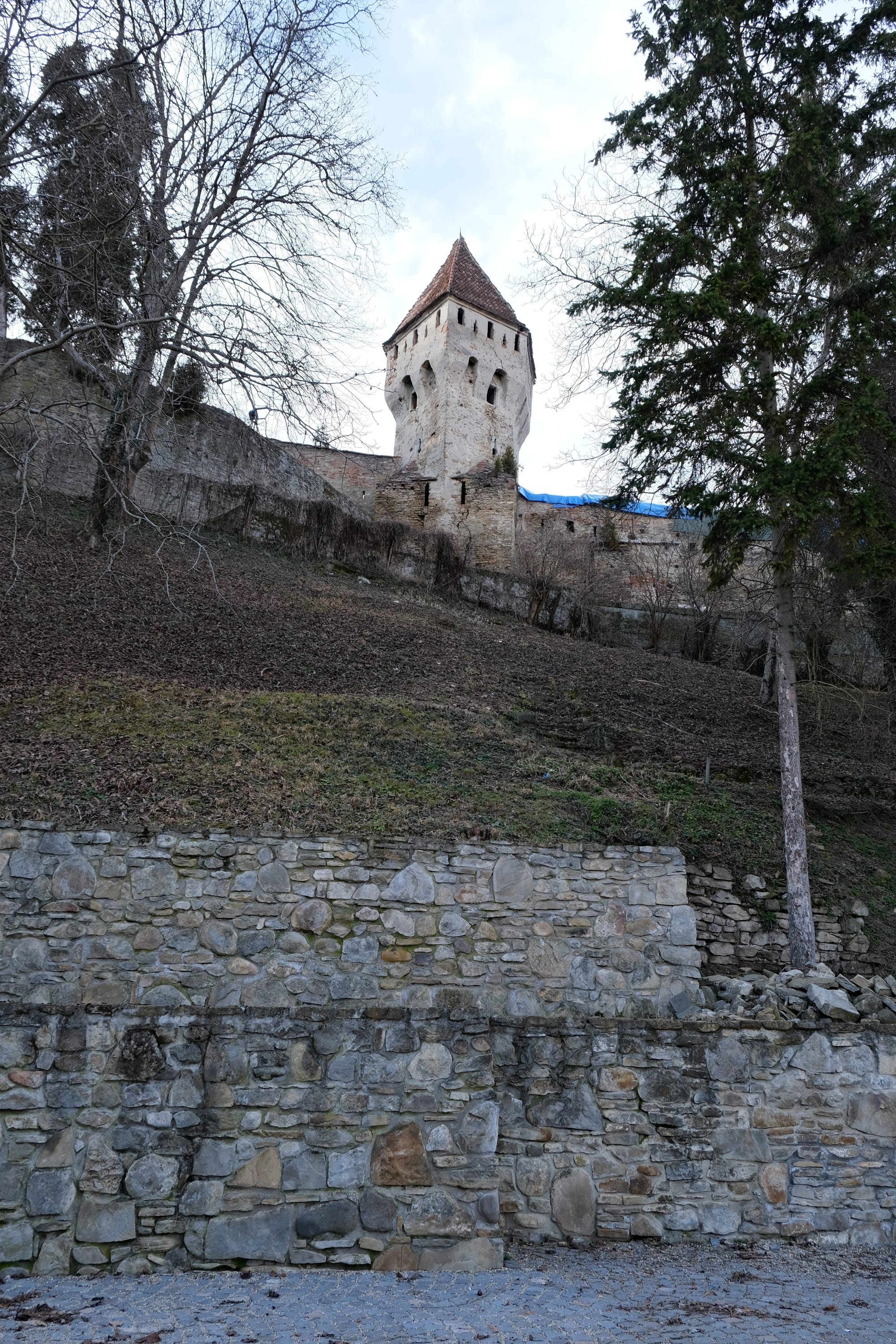
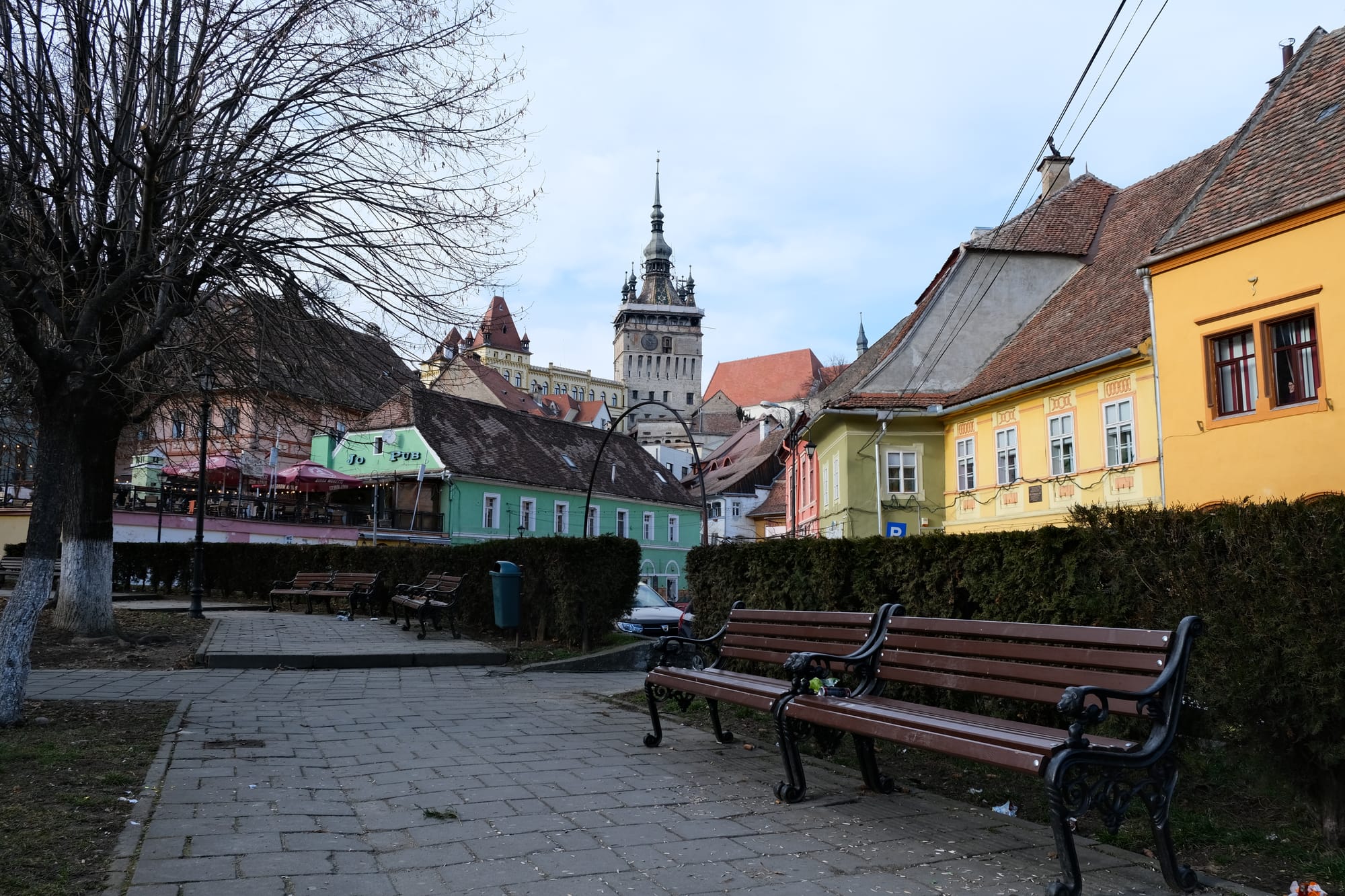
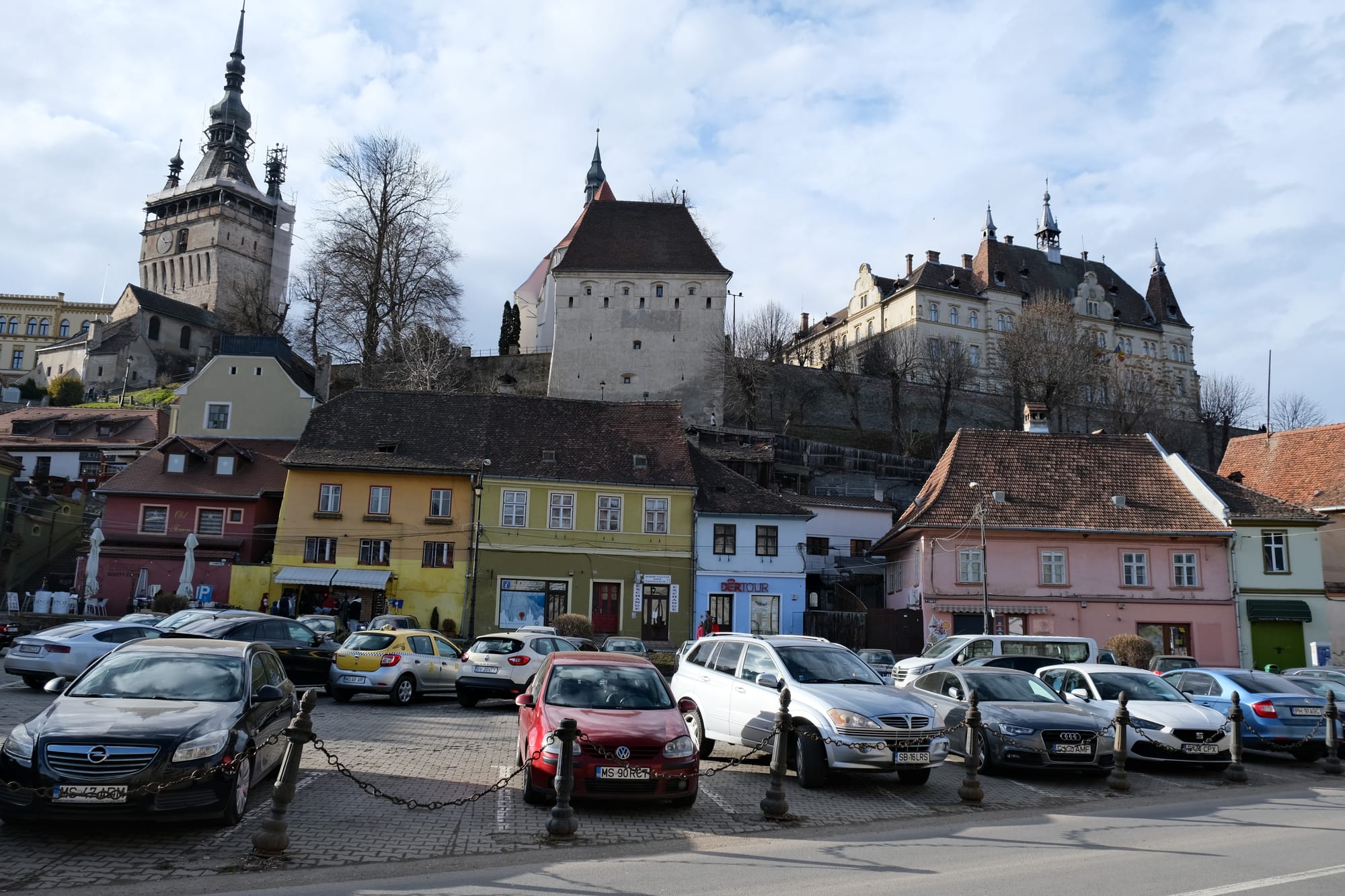
I was also often able to find good views looking towards the citadel. The various towers and buildings of the citadel are even more prominent because they are up on the hill. Hence they stand out visible from many places in Sighișoara. the Clock tower especially is quite prominent and I never have to walk far to be able to catch a glimpse of it.
The first image is looking up towards the Church on the Hill with the Tinsmiths' Tower in the midground. The second image is on the hill looking down at the the Butchers' Tower and the Furriers' Tower. The third image is looking up the hill to the Tinsmiths' Tower. The Fourth image shows the clock tower from a nearby park. The last image shows the Clock Tower, the Blacksmiths' Tower and the Town Hall up on the hill.
Medieval Cafe
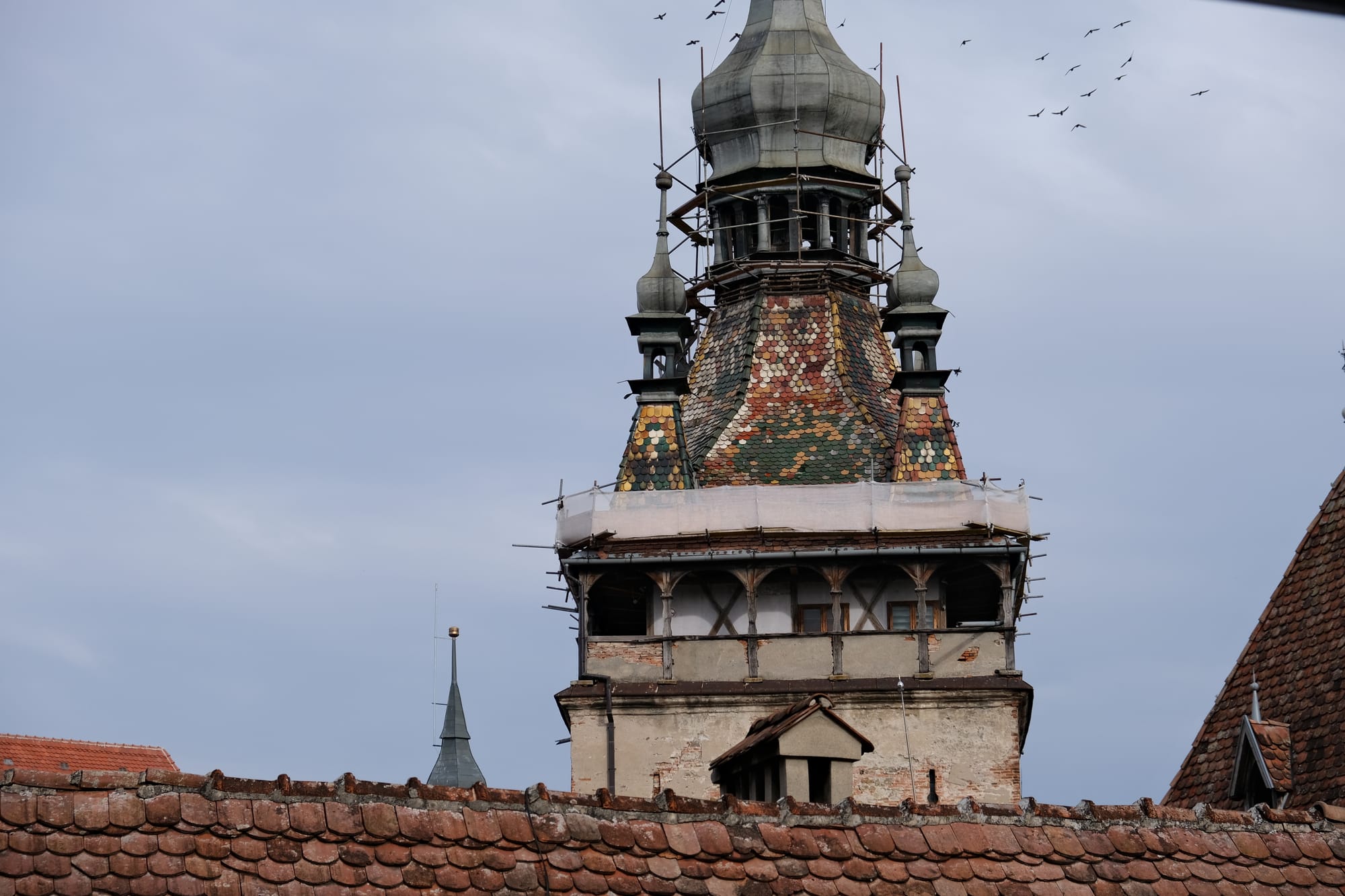
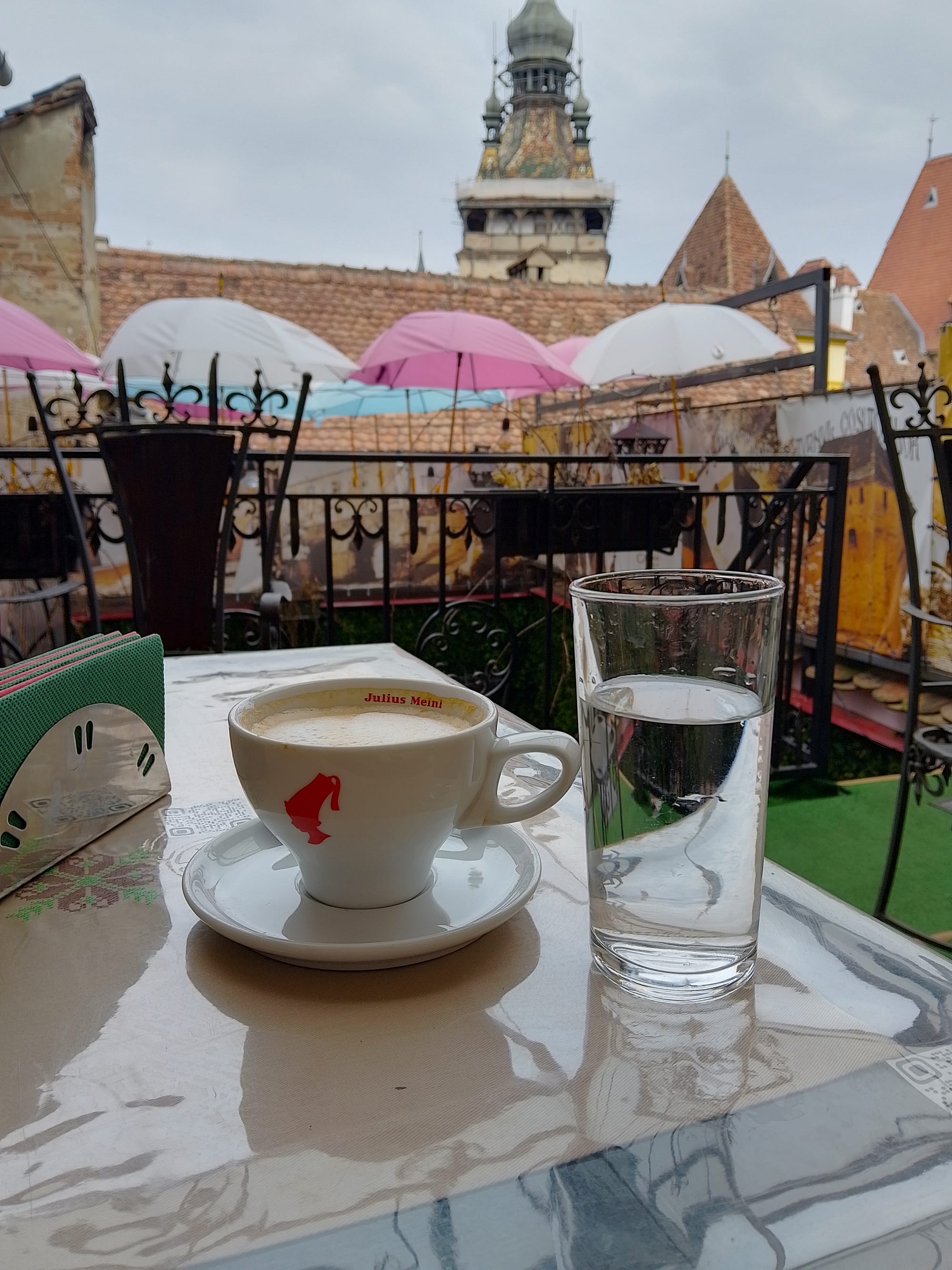
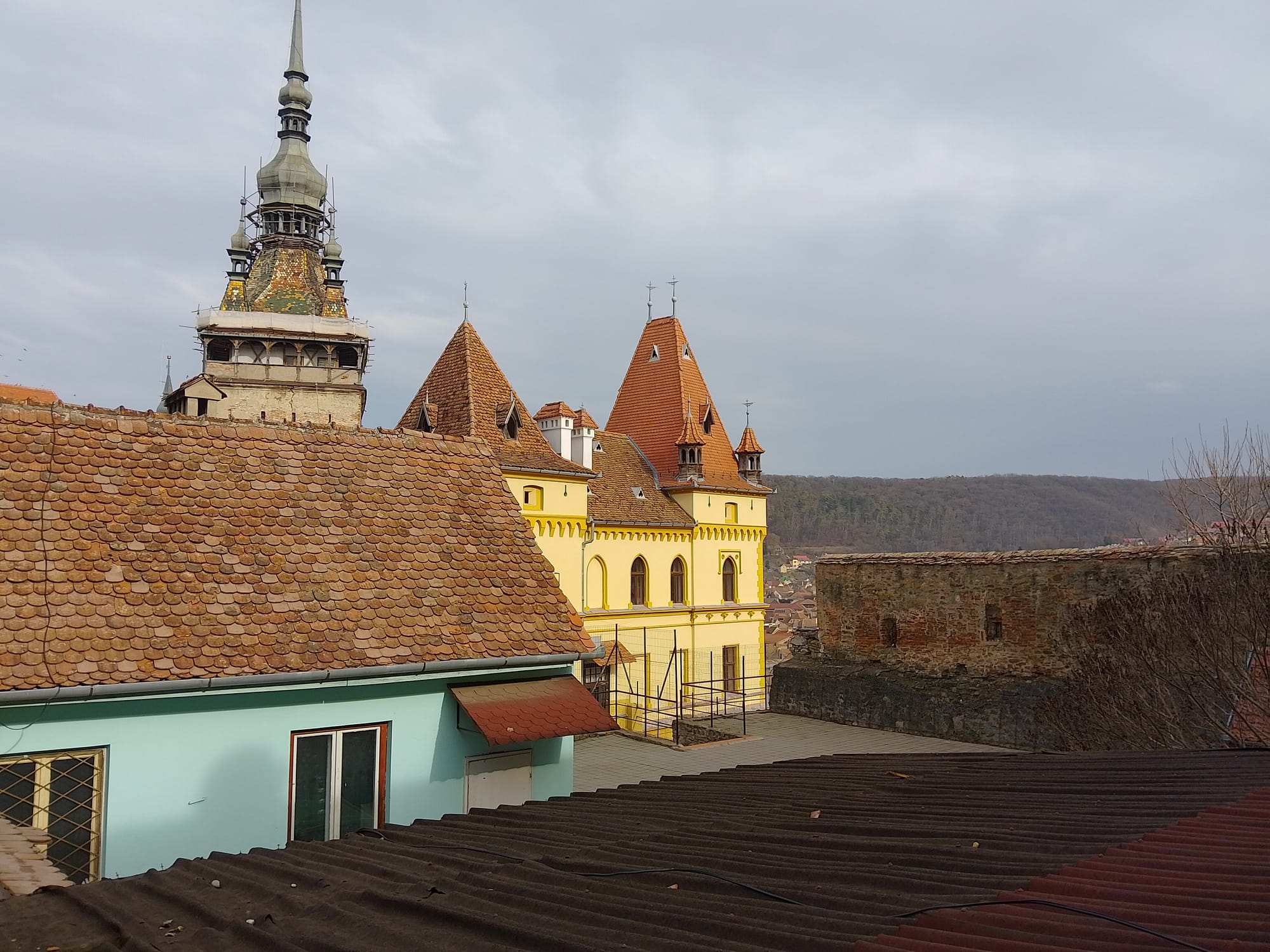
I stopped at a cafe to have a late lunch before catching the train back to Brașov. I was actually quite tired from all the exploration and I forgot a water bottle so I was in need of some hydration. The cafe was really quiet and I had my choice of where to sit. I walked through the main room and out into a back courtyard, from there I noticed stairs going up to an outdoor balcony with some tables. This balcony was awesome as from it I could see the Clock Tower. Pictured above is the view from my table.
After lunch I explored a little more before making my way to the train station. The train back was scheduled to take over four hours as it was a regional train that stops at all the small villages. Halfway on the journey the train was stopped for eighty minutes so my four hour ride became nearly five and a half hours long. I was glad to make it back to my apartment in Brașov and eager for some rest.
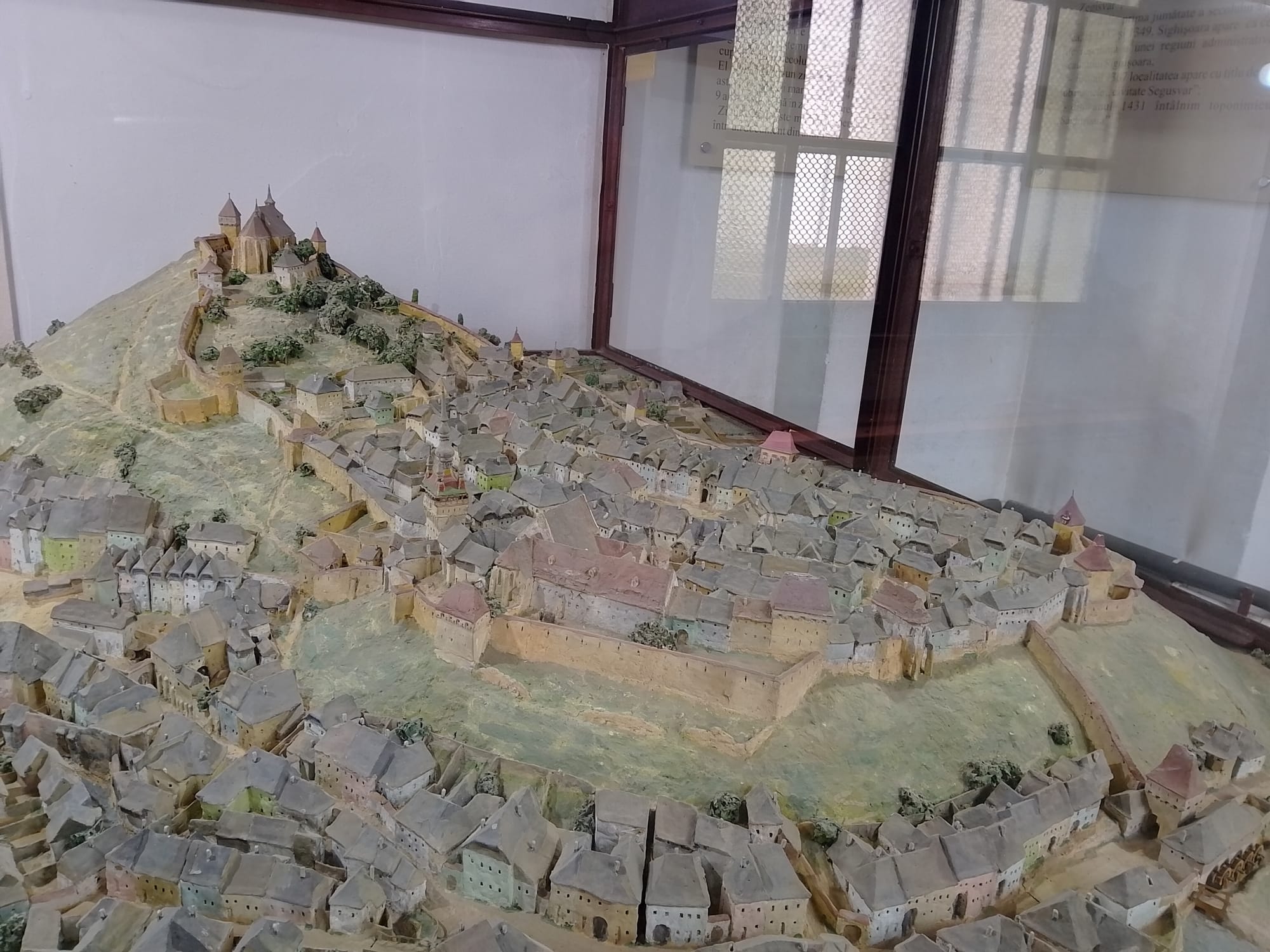
Bonus content. The Clock Tower museum had a miniature model of Sighișoara. In the absence of me being able to get any aerial footage, this is the best image I can show to give you a sense of the layout of the city.
Thanks for reading – Edward
Written 21st of February 2024
Please comment below if you have any questions or thoughts on any pictures.